Category: Transfer Pricing Library
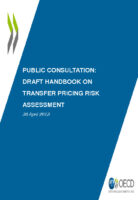
April 2013: Draft Handbook on Transfer Pricing Risk Assessment
The 2013 Draft Handbook on Transfer Pricing Risk Assessment is a detailed, practical resource that countries can follow in developing their own risk assessment approaches. The handbook supplements useful materials already available with respect to transfer pricing risk assessment. The OECD Forum on Tax Administration published a report entitled “Dealing Effectively with the Challenges of Transfer Pricing” in January 2012. One chapter of that report also addresses transfer pricing risk assessment.
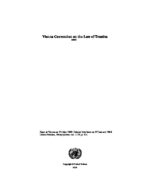
Vienna Convention on the Law of Treaties 1969
The Vienna Convention was done at Vienna on 23 May 1969 and entered into force on 27 January 1980. It is regarded as one of the most important instruments in treaty law and remains an authoritative guide in disputes over treaty interpretation. The Vienna Convention on the Law of Treaties (VCLT) is an international agreement regulating treaties between states. It establishes comprehensive rules, procedures, and guidelines for how treaties are defined, drafted, amended, interpreted, and generally operated. An international treaty is a written agreement between international law subjects reflecting their consent to the creation, alteration, or termination of their rights and obligations. The VCLT is considered a codification of customary international law and state practice concerning treaties. The convention was adopted and opened to signature on 23 May 1969, and it entered into force on 27 January 1980. It has been ratified by 116 states as of January 2018. Some non-ratifying parties, such as the United States, recognize parts of it as a restatement of customary international law and binding upon them as such.

IRS – APA Study Guide issued in early 2000s
In the early 2000s the IRS issued a “APA study guide” where guidance is provided in relation to various practical issues in the area of transfer pricing. The study guide is part of a large collection of IRS practices and statistics from working with MAP and APA that can be accessed via this link.
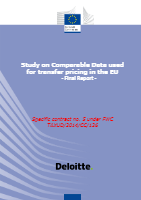
December 2016: EU Study on Comparable Data used for transfer pricing
The Study on Comparable data used for Transfer Pricing in the EU provides an overview and assessment of the availability and quality of market data ('comparables') used for transfer pricing purposes in the EU. Furthermore it assesses and evaluates situations characterising the lack and/or non-reliability of comparable data as well as the situation for pan-European comparable searches.
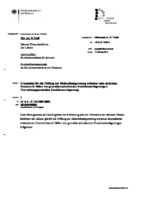
German Guidance on Business Restructuring and Valuation issued in October 2010
In 2008 German legislation on business restructurings was updated to align with the new chapter XI in the OECD Transfer Pricing Guidelines. § 1 para. 3 AStG and the “Regulation on the application of the arm’s length principle according to §1 para. 1 AStG in cases of cross-border relocation of functions” of 12.8.2008 (Function Relocation Regulation, in short: FVerlV). Guidance was subsequently issued by the tax authorities in BMF letter of 13 October 2010, IV B 5 – S 1341/08/10003, BStBl 2010 I p. 774; in short: VWGFVerl. Click here for unofficial English translation Click here for other translation
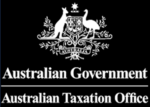
2017: ATO transfer pricing issues related to centralised operating models
The Practical Compliance Guideline (Guideline) sets out the Australian Taxation Office’s (ATO’s) compliance approach to transfer pricing issues related to the location and relocation of certain business activities and operating risks into a centralised operating model. The type of activities commonly centralised include marketing, sales and distribution functions although centralised operating models are not necessarily limited to these functions. For the purposes of this Guideline, these centralised operating models are referred to as ‘hubs’. The ATO understands that the overall structure of hubs, the transactions that flow in and out and the diversity and sophistication of a hub’s dealings contribute to increased complexity and higher costs for tax compliance. The Guideline is designed to help manage the compliance risk and therefore the compliance costs associated with your hub. The framework set out in the Guideline can be used to: (a) assess the compliance risk of the transfer pricing outcomes of hubs in accordance with the ATO’s risk framework (b) understand the compliance approach that the ATO will likely adopt having regard to the risk profile of hubs (c) mitigate the transfer pricing risk in relation to hubs , and (d) understand the type of analysis and evidence the ATO would require when testing the outcomes of hubs. the ATO’s engagement will be tailored having regard to the specific hub’s risk rating. If a hub is assessed as being in the low risk zone it can be expected that the ATO will not generally apply compliance resources to test and assess the transfer pricing outcomes. If a hub falls outside the low risk zone, It can be expected that the ATO will monitor, test and/or verify the transfer pricing outcomes. Hubs with a high risk rating will be reviewed as a matter of priority. There is no presumption that because a hub is outside the low risk zone that the transfer pricing outcomes are incorrect, rather it means that the ATO considers a risk and therefore the ATO may conduct further compliance activity to test the outcomes of the hub. The transfer pricing methods used in the risk framework in the Guideline are for risk assessment purposes only. Consistent with the OECD Transfer Pricing Guidelines for Multinational Enterprises and Tax Administrations 2010 (OECD guidelines), when pricing an arrangements the transfer pricing methodology (or combination of methodologies) that is most appropriate and reliable for your circumstances should be used. The Guideline is structured as follows: (a) Part A sets out the general indicators and principles of the hub risk framework. These principles are relevant to all types of offshore hubs and apply to both outbound and inbound goods and commodity flows (b) Part B provides guidance to assist you when preparing your transfer pricing analysis if you are outside the green zone, and (c) Schedules attached to this Guideline set out specific indicators relevant to particular types of hubs.
WCO Guide to Customs Valuation and Transfer Pricing
In June 2015 the World Customs Organization (WCO) published a guide to Customs Valuation and the relationship to Transfer Pricing. This relationship between Customs valuation and transfer pricing has been discussed in various national and international fora over the past few years. The business community has raised the issue as a matter of concern, in particular advocating that Customs take into account available transfer pricing information prepared for direct tax purposes when examining related party transactions and also give consideration to the impact of transfer pricing adjustments on the Customs value. It has been recognised that at this stage any alignment or merger of tax and Customs methodologies is not a realistic proposition given the particulars of the existing legal frameworks upon which they are based. The essence of the issue therefore is contained in the following question: to what extent can information contained in transfer pricing documentation, primarily developed for taxation purposes, provide useful information for Customs to determine whether or not the price declared for imported goods has been influenced by the parties’ relationship, in order to make a final determination of the Customs value? The Technical Committee on Customs Valuation has confirmed the basic principle that transfer pricing documentation may provide useful information for Customs in respect of related party transactions, on a case by case basis (see Chapter 4). The focus is now on providing further guidance to Customs on how to examine and interpret transfer pricing documentation which may be helpful in this regard. The other key question is the impact of adjustments made (after importation) for transfer pricing purposes; in which cases, if any, should such adjustments be taken into account by Customs in determining the Customs value of the imported goods? Additionally, the WCO is working with the OECD and World Bank Group to encourage Customs and tax administrations to establish bilateral lines of communication in order to exchange knowledge, skills and data, where possible, which will help ensure that each authority has the broadest picture of a MNE’s business, its compliance record and can make informed decisions on the correct revenue liability.
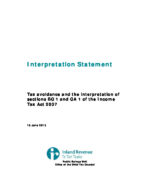
Statement released by New Zealand’s Inland Revenue on determining whether an Arrangement is Tax Avoidance
On 13 June 2013, a Statement was released by New Zealand’s Inland Revenue Service on the interpretation of Tax Avoidance provisions. This statement outlines the Commissioner’s view of the law on tax avoidance in New Zealand and sets out the approach the Commissioner will take to application of the general anti-avoidance provision, based on the three-stage test for assessing whether an arrangement is tax avoidance as provided by the Supreme Court Judgment in the Ben Nevis case. In Ben Nevis case the Supreme Court indicated it intended to settle the approach regarding the relationship between s BG 1 and the rest of the Income Tax Act. This has been acknowledged in all relevant judicial decisions released since Ben Nevis. Accordingly, the Commissioner considers that the statement is based upon and reflects the view of the court in Ben Nevis.

July 2017: ATO guidance on related party financing arrangements
The Practical Compliance Guideline (Guideline) from the ATO outlines the compliance approach to the taxation outcomes associated with a ‘financing arrangement’, as defined in section 995-1 of the Income Tax Assessment Act 1997 (ITAA 1997), or a related transaction or contract, entered into with a cross border related party. Such an arrangement, transaction or contract is referred to in this Guideline as a ‘related party financing arrangement’. This Guideline does not cover financing arrangements characterised as equity in accordance with Division 974 of the ITAA 1997. The framework in these Guideline and the accompanying schedules are used to assess risk and tailor engagement according to the features of the related party financing arrangement, the profile of the parties to the related party financing arrangement and the choices and behaviours of the group. The tax risk associated with the related party financing arrangement is assessed having regard to a combination of quantitative and qualitative indicators. If the related party financing arrangement is rated as low risk, then the Commissioner will generally not apply compliance resources to review the taxation outcomes other than to fact check the appropriate risk rating. If the related party financing arrangement falls outside the low risk category, the Commissioner will monitor, test and/or verify the taxation outcomes. The higher the risk rating, the more likely the arrangements will be reviewed as a matter of priority. The framework set out in this Guideline can be applied to: (a) assess the tax risk of your related party financing arrangement (b) understand the compliance approach we are likely to adopt given the risk profile of your related party financing arrangement (c) work with us to mitigate the transfer pricing risk in relation to your related party financing arrangement and be confident you have reduced your risk exposure, and (d) understand the type of analysis and evidence we would require when assessing the risk outcomes of your related party financing arrangements.
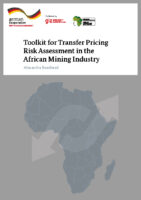
September 2017: Transfer Pricing Risk Assessment in the Mining Industry
The African Tax Administration Forum (ATAF) and the German Federal Ministry for Economic Cooperation and Development (BMZ), through the Deutsche Gesellschaft für Internationale Zusammenarbeit (GIZ) GmbH, have developed this toolkit for African tax authorities seeking to assess transfer pricing risk in the mining industry. The purpose is to strengthen authorities’ capacity to determine whether they should audit particular high-risk “related party transactions.” The toolkit employs a specific risk review approach, which focuses on particular transfer pricing issues that present a high risk to revenue (as distinct from a comprehensive risk review, which tax authorities use when they cannot detect where transfer pricing issues are likely to arise). A loss of even 1 percent of the value of these transactions is likely to be significant for developing country revenues. These issues are also very prevalent: many African tax authorities report corporate services, including procurement and management, as common causes of tax loss. The four issues of focus are: 1. Marketing arrangements. A related company, for example a marketing hub, buys mineral products from the mine. The key issue is whether the mineral products are transferred to a fully fledged related party marketer that takes ownership of the product, performs value-adding functions and assumes entrepreneurial risk, or, more commonly, a hub that merely provides a support function. 2. Intercompany debt. A subsidiary receives debt from a parent or an affiliate company, often a corporate treasury located in a low-tax jurisdiction, to finance geological exploration or mine development. Debt generates interest payments, which are tax deductible. Most African countries currently limit the maximum amount of debt on which deductible interest payments are available, by way of a debt-to-equity ratio. However, the cost of related party debt (i.e., the interest rate) is difficult for tax authorities to price, leaving the tax base vulnerable to excessive interest deductions. 3. Procurement services. A company purchases mining goods and services on behalf of its subsidiary; the price charged to the subsidiary will include the direct cost, plus a “mark-up.” Usually in such cases the cost base should be the cost of providing the service, not the value of the goods. 4. Management services. The subsidiary pays a fee to a related party in return for a range of administrative, technical and advisory services.

Signing of the Multilateral Convention to prevent Base Erotion and Profit Shifting “Multilateral Instrument”
On 7 June 2017, over 70 Ministers and other high-level representatives participated in the signing ceremony of the Multilateral Convention to Implement Tax Treaty Related Measures to Prevent Base Erosion and Profit Shifting (“Multilateral Instrument” or “MLI”). Signatories include jurisdictions from all continents and all levels of development. A number of jurisdictions have also expressed their intention to sign the MLI as soon as possible and other jurisdictions are also actively working towards signature. multilateral-convention-to-implement-tax-treaty-related-measures-to-prevent-BEPS
Belgium,March 2016: New list of “tax havens” published for 2016
According to a royal decrete dividends received deduction is not available in Belgium where the recieving company is resident in a country defined to be a “tax haven” A tax haven is defined as a country where: (1) the nominal rate of the corporate income tax is less than 15%; or (2) the effective corporate tax burden is less than 15%. The Belgien list of “tax haven” jurisdictions for 2016 contains the following countries: Abu Dhabi, Ajman, Andorra, Bosnia and Herzegovina, Dubai, Gibraltar, Guernsey, Jersey, Kyrgyzstan, Kuwait, Kosovo, Liechtenstein, Macao, Macedonia, Maldives, Isle of Man, Marshall Islands, Micronesia, Moldova, Monaco, Montenegro, Oman, Uzbekistan, Paraguay, Qatar, Ras al Khaimah, Serbia, Sharjah, East Timor, Turkmenistan, and Umm al Quaiwain.
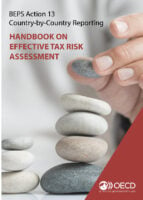
September 2017: Handbook on Effective Tax Risk Assessment using CbC Reports
The Handbook on Effective Tax Risk Assessment explores how information contained in CbC reports can be used for risk assessment and which types of tax risk indicators that may be identified using the information contained in CbC Reports. In chapter 4 some of the main tax risk indicators that may be identified using CbC Reports are described: The footprint of a group in a particular jurisdiction A group’s activities in a jurisdiction are limited to those that pose less risk There is a high value or high proportion of related party revenues in a particular jurisdiction The results in a jurisdiction deviate from potential comparable The results in a jurisdiction do not reflect market trends There are jurisdictions with significant profits but little substantial activity There are jurisdictions with significant profits but low levels of tax accrued There are jurisdictions with significant activities but low levels of profit (or losses) A group has activities in jurisdictions which pose a BEPS risk A group has mobile activities located in jurisdictions where the group pays a lower rate or level of tax There have been changes in a group’s structure, including the location of assets Intellectual property (IP) is separated from related activities within a group A group has marketing entities located in jurisdictions outside its key markets A group has procurement entities located in jurisdictions outside its key manufacturing locations Income tax paid is consistently lower than income tax accrued A group includes dual resident entities A group includes entities with no tax residence A group discloses stateless revenues Information in a group’s CbC Report does not correspond with information previously provided by a constituent entity According to the OECD, combiantions of thise 19 indicators can provide a general overview of the main tax risks of a MNE Group.

TAX BATTLES – The dangerous global Race to the Bottom on Corporate Tax
This report from www.oxfam.org examines tax competition, and the resultant race to the bottom in the taxation of global corporations. Using new research, this report exposes the world’s corporate tax havens – the 15 countries which facilitate the most extreme forms of tax dodging. The report looks at the harm caused by falling corporate tax rates and tax giveaways in countries across the world. Finally, the report identifies clear actions governments can take to act in the interest of their citizens and put an end to tax havens and the race to the bottom. bp-race-to-bottom-corporate-tax-121216-en.pdf
OECD Article 9 (with commentary)
ARTICLE 9 ASSOCIATED ENTERPRISES 1. Where an enterprise of a Contracting State participates directly or indirectly in the management, control or capital of an enterprise of the other Contracting State, or the same persons participate directly or indirectly in the management, control or capital of an enterprise of a Contracting State and an enterprise of the other Contracting State, and in either case conditions are made or imposed between the two enterprises in their commercial or financial relations which differ from those which would be made between independent enterprises, then any profits which would, but for those conditions, have accrued to one of the enterprises, but, by reason of those conditions, have not so accrued, may be included in the profits of that enterprise and taxed accordingly. 2. Where a Contracting State includes in the profits of an enterprise of that State – and taxes accordingly – profits on which an enterprise of the other Contracting State has been charged to tax in that other State and the profits so included are profits which would have accrued to the enterprise of the first mentioned State if the conditions made between the two enterprises had been those which would have been made between independent enterprises, then that other State shall make an appropriate adjustment to the amount of the tax charged therein on those profits. In determining such adjustment, due regard shall be had to the other provisions of this Convention and the competent authorities of the Contracting States shall if necessary, consult each other. COMMENTARY ON ARTICLE 9 CONCERNING THE TAXATION OF ASSOCIATED ENTERPRISES 1. This Article deals with adjustments to profits that may be made for tax purposes where transactions have been entered into between associated enterprises (parent and subsidiary companies and companies under common control) on other than arm’s length terms. The Committee has spent considerable time and effort (and continues to do so) examining the conditions for the application of this Article, its consequences and the various methodologies which may be applied to adjust profits where transactions have been entered into on other than arm’s length terms. Its conclusions are set out in the report entitled Transfer Pricing Guidelines for Multinational Enterprises and Tax Administrations,’ which is periodically updated to reflect the progress of the work of the Committee in this area. That report represents internationally agreed principles and provides guidelines for the application of the arm’s length principle of which the Article is the authoritative statement. Paragraph 1 2. This paragraph provides that the taxation authorities of a Contracting State may, for the purpose of calculating tax liabilities of associated enterprises, re-write the accounts of the enterprises if, as a result of the special relations between the enterprises, the accounts do not show the true taxable profits arising in that State. It is evidently appropriate that adjustment should be sanctioned in such circumstances. The provisions of this paragraph apply only if special conditions have been made or imposed between the two enterprises. No re-writing of the accounts of associated enterprises is authorised if the transactions between such enterprises have taken place on normal open market commercial terms (on an arm’s length basis). 3. As discussed in the Committee on Fiscal Affairs’ Report on “Thin Capitalisation” there is an interplay between tax treaties and domestic rules on thin capitalisation relevant to the scope of the Article. The Committee considers that: a) the Article does not prevent the application of national rules on thin capitalisation insofar as their effect is to assimilate the profits of the borrower to an amount corresponding to the profits which would have accrued in an arm’s length situation; b) the Article is relevant not only in determining whether the rate of interest provided for in a loan contract is an arm’s length rate, but also whether a prima facie loan can be regarded as a loan or should be regarded as some other kind of payment, in particular a contribution to equity capital; c) the application of rules designed to deal with thin capitalisation should normally not have the effect of increasing the taxable profits of the relevant domestic enterprise to more than the arm’s length profit, and that this principle should be followed in applying existing tax treaties. 4. The question arises as to whether special procedural rules which some countries have adopted for dealing with transactions between related parties are consistent with the Convention. For instance, it maybe asked whether the reversal of the burden of proof or presumptions of any kind which are sometimes found in domestic laws are consistent with the arm’s length principle. A number of countries interpret the Article in such a way that it by no means bars the adjustment of profits under national law under conditions that differ from those of the Article and that it has the function of raising the arm’s length principle at treaty level. Also, almost all member countries consider that additional information requirements which would be more stringent than the normal requirements, or even a reversal of the burden of proof, would not constitute discrimination within the meaning of Article 24. However, in some cases the application of the national law of some countries may result in adjustments to profits at variance with the principles of the Article. Contracting States are enabled by the Article to deal with such situations by means of corresponding adjustments (see below) and under mutual agreement procedures. Paragraph 2 5. The re-writing of transactions bet ween associated enterprises in the situation envisaged in paragraph 1 may give rise to economic double taxation (taxation of the same income in the hands of different persons), in so far as an enterprise of State A whose profits are revised upwards will be liable to tax on an amount of profit which has already been taxed in the hands of its associated enterprise in State B. Paragraph 2 provides that in these circumstances, State B shall make an appropriate adjustment so as to relieve the double taxation. 6. It
Oxfam’s list of Tax Havens, December 2016
Oxfam’s list of Tax Havens, in order of significance are: (1) Bermuda (2) the Cayman Islands (3) the Netherlands (4) Switzerland (5) Singapore (6) Ireland (7) Luxembourg (8) Curaçao (9) Hong Kong (10) Cyprus (11) Bahamas (12) Jersey (13) Barbados, (14) Mauritius and (15) the British Virgin Islands. Most notably is The Netherlands placement as no. 3 on the list. Oxfam researchers compiled the list by assessing the extent to which countries employ the most damaging tax policies, such as zero corporate tax rates, the provision of unfair and unproductive tax incentives, and a lack of cooperation with international processes against tax avoidance (including measures to increase financial transparency). Many of the countries on the list have been implicated in tax scandals. For example Ireland hit the headlines over a tax deal with Apple that enabled the global tech giant to pay a 0.005 percent corporate tax rate in the country. And the British Virgin Islands is home to more than half of the 200,000 offshore companies set up by Mossack Fonseca – the law firm at the heart of the Panama Papers scandal. The United Kingdom does not feature on the list, but four territories that the United Kingdom is ultimately responsible for do appear: the Cayman Islands, Jersey, Bermuda and the British Virgin Islands.
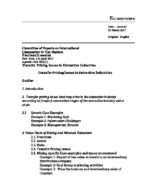
UN Guidance Note on Extractives (Oil, Gas, Minerals)
The UN Transfer Pricing Manual does not address industry-specific issues, but, in 2017 a guidance note was developed by a subcommittee looking into transfer pricing issues in extractive industries, both relating to the production of oil and natural gas and relating to mining and minerals extraction. The note draws on materials that have been published in other fora, including the Platform for Cooperation on Tax (hereafter: “the Platform”), reflecting enhanced collaboration between the IMF, OECD, UN and WBG for the benefit of developing countries. Reference can be made to the Discussion Draft published by the Platform on Addressing the Information Gaps on Prices of Minerals Sold in an Intermediate Form and the Discussion Draft presenting A Toolkit for addressing Difficulties in Accessing Comparable data for Transfer Pricing Analyses. Reference can also be made to the WBG’s Extractive Industries Transparency Initiative and materials3 and the publication Transfer Pricing in Mining with a Focus on Africa. Table 1 in the first part of the note identifies some of the transfer pricing issues that often arise in the extractive industries. The table is organized by reference to the various major stages in the extractive industry value chain. The table makes some general suggestions on methods and approaches that might be used in addressing the identified issues. Thereafter, the guidance note provides several case examples, some of which result from discussions with tax inspectors working in developing countries. Taken together, the table and the examples provide useful background information for developing countries to utilize in addressing transfer pricing issues in extractive industries. The note does not aspire to provide comprehensive transfer pricing guidance for the extraction industries, but should provide a useful summary and checklist of some of the issues that commonly arise. It is recommended that this extractive industry guidance note and the Manual be consulted together.
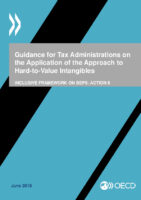
Guidance on the application of the HTVI approach
This June 2018 report contains guidance for tax administrations on the application of the approach to hard-to-value intangibles (HTVI). The HTVI approach was adopted as part of the Actions 8-10 Report in 2015 and it was subsequently incorporated in Chapter VI of the OECD Transfer Pricing Guidelines. The guidance is aimed at reaching a common understanding and practice among tax administrations on how to apply adjustments resulting from the application of the approach to HTVI. The guidance includes a number of examples to clarify the application of the HTVI approach in different scenarios and addresses the interaction between the HTVI approach and the access to the mutual agreement procedure under the applicable tax treaty. This guidance has formally been incorporated into the Transfer Pricing Guidelines as an annex to Chapter VI.
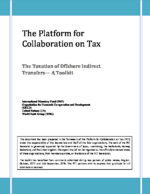
A Toolkit on the Taxation of Offshore Indirect Transfers
The Platform for Collaboration on Tax (IMF, OECD, UN and the WBG) has published a toolkit on the taxation of Offshore Indirect Transfers. The tax treatment of ‘offshore indirect transfers’ (OITs) – in essence, the sale of an entity owning an asset located in one country by a resident of another – has emerged as a significant issue in many developing countries. It has been identified in IMF technical assistance work and scoping by the OECD, but was not covered by the G20-OECD project on Base Erosion and Profit Shifting (BEPS). In relation to the extractive industries, OITs are also the subject of work at the UN. The country in which the underlying asset is located may wish to tax gains realized on such transfers – as is currently the case for direct transfers of immovable assets. Such treatment might reasonably be applied to a wider class of assets, to include more those generating location specific rents—returns that exceed the minimum required by investors and which are not available in other jurisdictions. This might include, for instance, telecom licenses and other rights issued by government. The report also recognizes, however, that gains on OITs may be attributable in part to value added by the owners and managers of such assets, and that some countries may choose not to tax gains on OITs. The provisions of both the OECD and the UN Model treaties suggest wide acceptance that capital gains taxation of OITs of “immovable” assets can be imposed by the location country. It remains the case, however, that the relevant model Article 13(4) is found only in around 35 percent of all Double Tax Treaties (DTTs), and is less likely to be found when one party is a low income resource rich country. To date, the Multilateral Convention has increased the number of tax treaties that effectively include Article 13(4) of the OECD MTC. This impact is expected to increase as new parties sign the MC and amend their covered tax treaties to include the new language of Article 13(4). Whatever treaties may or may not come into play, however, such a taxing right cannot be supported without appropriate definition in domestic law of the assets intended to be taxed and without a domestic law basis to assert that taxing right. There is a need for a more uniform approach to the taxation of OITs by those countries that choose to tax them. Countries’ unilateral responses have differed widely, in terms of both which assets are covered and the legal approach taken. Greater coherence could enhance tax certainty. The report outlines two main approaches to the taxation of OITs by the country in which the underlying asset is located – provisions for which require careful drafting. It identifies the two main approaches for so doing and provides, for both, sample simplified legislative language for domestic law in the location country. One of these methods (‘Model 1’) treats an OIT as a deemed disposal of the underlying asset. The other (‘Model 2’) treats the transfer as being made by the actual seller, offshore, but sources the gain on that transfer within the location country and so enables that country to tax it. The report expresses no general preference between these: the appropriate choice will depend on countries’ circumstances and preferences. In the toolkit reference is made to the following caselaws India—The Vodafone Case Peru—The Acquisition of Petrotech Uganda—The Zain Case
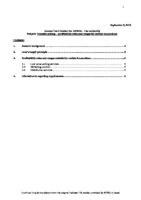
Israel – Guidance on Limited Risk Distribution – Circular 11/2018
Circular on transfer pricing – profitability rates and ranges for certain transactions – Limited Risk Distributors (LRDs)

OECD Model Tax Convention 2017 (Full Version – with commentaries)
This full version of the OECD Model Tax Convention contains the full text of the Model Tax Convention on Income and on Capital as it read on 21 November 2017, including the Articles, the Commentaries, the non-OECD economies’ positions, the Recommendation of the OECD Council, the historical notes and the full text of a number of background reports adopted after 1977.

German royalty barrier to counter IP box-regimes
Some countries in Europe offer so-called IP or Patent boxes. To counter such tax practices, effective from 31 December 2017, Germany has introduced a new royalty barrier in ‘Law against Harmful Tax Practices in Connection with the Assignment of Rights. The law limits tax deductibility of expenses for the assignment of rights in order to prevent royalty income from not being taxed or taxed at a low rate and taxes income in the country where value is/was created. Deduction of expenses for the assignment of rights is restricted, where the following two cumulative requirements are met: 1) Royalty income for the assignment of rights is subject to low taxation which differs from standard taxation in the recipient’s country (preferential regime) 2) The licensor is a related party to the licensee within the meaning of Section 1 Paragraph 2 German Foreign Tax Act. Under these circumstances, expenses are not (or only partially) tax deductible. The non-deductible part of these expenses is calculated as: (25% – income tax burden in %) / 25%. The royalty barrier does not apply if low taxation is the result of a preferential regime of the licensor’s income that follows the Nexus Approach according to Chapter 4 of the OECD’s Action 5 final report.
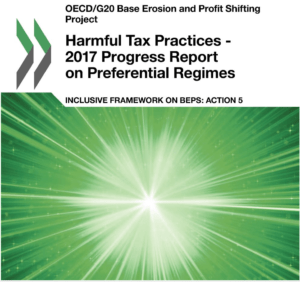
OECD: Report on harmful tax practices, 16 October 2017
The OECD report on harmful tax incentives provides details on reviews of 164 preferential tax regimes. Some preferential tax regimes are considered harmful – where these encourage the erosion of other jurisdictions’ tax bases. All 102 members of the BEPS Inclusive Framework have committed to ensuring that any regimes offered meet the criteria that have been agreed as part of BEPS Action 5. Crucially, this includes a requirement that taxpayers benefiting from a regime must themselves undertake the core business activity, ensuring the alignment of taxation with genuine business substance. Of the 164 regimes reviewed in the last twelve months: * 99 require action. * For 93 of these 99 regimes, the required changes have already been completed or initiated by Inclusive Framework members, * 56 regimes do not pose a BEPS risk, * 9 regimes are still under review, due to extenuating circumstances such as the impact of the recent hurricanes on certain Caribbean jurisdictions. OECD 2017-progress-report-on-preferential-regimes

Israel – Guidance on Limited Risk Distribution – Circular 12/2018
Circular on transfer pricing – profitability rates and ranges for certain transactions – Limited Risk Distributors (LRDs)
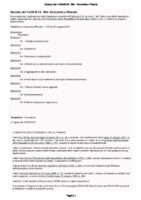
Italien Transfer Pricing Guidelines, Ministerial Decree of 14 May 2018, published in the Official Gazette no. 118/2018
Italien legislation on transfer pricing is contained in Article 110, paragraph 7 of the Consolidated Income Tax Act, where the first sentence states that “the components of income deriving from transactions with companies not resident in the territory of the State, which directly or indirectly control the company, are controlled by it or are controlled by the same company that controls the company, are determined by reference to the terms and prices that would have been agreed between independent parties operating in conditions of free competition and in comparable circumstances, if an increase in income is the result”. The rule was last amended by Article 59 of Decree-Law No. 50/2017 which, as far as it is of interest, replaced the reference to “normal value” with the “arm’s length principle”, referred to in the aforementioned Article 9 of the OECD Model Convention, in determining the value of transactions between associated enterprises operating in different States. At the level of secondary legislation, the Ministerial Decree of 14 May 2018, published in the Official Gazette no. 118/2018, contains the guidelines for the application of the provisions contained in paragraph 7 of Article 110 on transfer pricing. Click here for unofficial English translation

UK – Profit Diversion Compliance Facility (PDCF) Published by HMRC January 2019
HMRC Profit Diversion Compliance Facility Chapter 1 – introduction 1.1 Background Companies should recognise and pay tax on profits where the economic activities to generate those profits are carried out. HMRC has found that some Multinational Enterprises (MNEs) have adopted cross border pricing arrangements which are based on an incorrect fact pattern and/or are not consistent with the Organisation for Economic Co-operation and Development (OECD) Transfer Pricing Guidelines (TPG), as clarified through Actions Points 8-10 of the OECD Base Erosion and Profit Shifting Project. This is for 2 main reasons: Firstly, some have made incorrect assumptions, or not implemented arrangements as originally intended or declared to HMRC, so that there is a divergence between the fact pattern on which the Transfer Pricing (TP) analysis is based, and what is actually happening on the ground. This could be for a variety of reasons, including: insufficient understanding or incorrect/misleading statements on the nature or relative value of functions, assets and risks at the outset businesses change over time so that the functional profile may become different from that originally assumed or intended some businesses undervalue the contributions made by staff in the UK and overvalue the contributions of staff in other tax jurisdictions Secondly, the TP policies are not in accordance with the OECD TPG, for example because of: over reliance on TP policies predicated on contractual assumption of risk and legal ownership of assets, giving insufficient weight to the location of the control functions and/or the contributions to those control functions in relation to the risk and/or the important functions in relation to the assets too heavy a reliance on inappropriate comparables These arrangements often result in a reduction of UK profits, and may involve the diversion of UK profits to an overseas entity where the profits are taxed at lower rates or not at all. In a high proportion of investigations into such arrangements HMRC is finding that the arrangements don’t stand up to scrutiny and significant additional tax is due. The Diverted Profits Tax (DPT) was introduced to encourage MNEs using such arrangements to change their behaviour and pay Corporation Tax on profits in line with economic activity. Many MNEs with arrangements targeted by DPT have changed their TP policy and/or business structure leading to the right amount of UK Corporation Tax being paid, eliminating any potential DPT. 1.2 Co-operative Compliance HMRC prefers MNEs to fully disclose significant tax uncertainties or inaccuracies and to ensure compliance with tax law, and will work co-operatively, proactively and transparently with MNEs to resolve any tax uncertainties and risks. 1.3 Profit Diversion Compliance Facility HMRC is introducing a new Profit Diversion Compliance Facility for MNEs using arrangements targeted by DPT to give them the opportunity to bring their UK tax affairs up to date. HMRC recognises that many MNEs operate TP policies to achieve compliance with the OECD TPG, regularly review and update their policies, and discuss them with HMRC during business risk reviews and at other times. If a MNE is confident that their transfer pricing is up to date and they are paying the right amount of Corporation Tax, then they should not use the new compliance facility. The new facility is designed to encourage MNEs with arrangements that might fall within its scope to review both the design and implementation of their TP policies, change them if appropriate, and use the facility to put forward a report with proposals to pay any additional tax, interest and where applicable, penalties due. This will: enable MNEs to bring their tax affairs up to date openly, efficiently and without investigation by HMRC if a full and accurate disclosure is made give them certainty for the past and a low risk outcome for profit diversion in the future provide an accelerated process, HMRC will aim to respond to the proposal within 3 months of submission allow the MNE to manage its own internal processes around what evidence to gather, who is interviewed, what comparables are used (if any), and how the analysis is presented give unprompted penalty treatment if HMRC has not already started an investigation into profit diversion, 31 December 2019 is an important deadline for registration for some MNEs (see section 3 of chapter 4 of this guidance) This guidance sets out what HMRC would expect to see in such a report. The review of the arrangements should be proportionate to the scale and complexity of the business, the extent of tax at risk, the cause of any inaccuracies and failures to notify, and the proposals. The report should be free standing and self-explanatory. While it will be the responsibility of the MNE to review its arrangements and make a disclosure, HMRC is prepared to meet with MNEs who register to use the facility at the outset of the process to discuss plans for the review and later again before the final report and proposal is submitted, so that the MNE can present its findings and conclusions and hear any comments from HMRC. This work will be a priority for HMRC and a specifically designated, experienced team of specialists will risk assess all reports when received and consider whether the facts described and conclusions reached are soundly based on appropriate evidence, and if the TP policy and methodology adopted is reasonable and consistent with the OECD TPG. HMRC expects to be able to accept most proposals if they take account of this guidance and reflect the principles in it. Even if HMRC cannot accept the proposals as first presented, the report should provide a good basis for quick and efficient resolution, through dialogue, of particular differences of view between HMRC and the MNE. While the facility is aimed at arrangements targeted by DPT, businesses do not need to provide a technical analysis of whether DPT applies if they consider that their proposals eliminate any profit potentially chargeable to DPT. All technical analysis and any payment made can be on a without prejudice basis. HMRC will not regard the making of a proposal as indicating that the MNE thinks DPT could, or should, apply. 1.4 HMRC investigations Tackling profit diversion is a priority for HMRC. HMRC is conducting extensive research and data analysis and has invested in new teams of investigators. Investigations into profit diversion are usually resolved by agreeing transfer pricing adjustments. HMRC has identified a number of MNEs in a variety of business sectors which could be diverting profits,
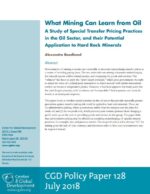
July 2018: Transfer Pricing Practices in the Oil Sector, and their Potential Application to Mining
In July 2018 Center for Global Development published a study of special transfer pricing practices in the oil sector, and their potential application to hard rock minerals. According to the study, governments of mining countries are vulnerable to investors manipulating transfer prices as a means of avoiding paying taxes. The two main risks are mining companies undercharging for mineral exports sold to related parties, and overpaying for goods and services. The “solution” has been to apply the “arm’s length principle,” which gives governments the right to adjust the value of a related party transaction so that it accords with similar transactions carried out between independent parties. However, it has been apparent for many years that the arm’s length principle, with its reliance on “comparables” that in practice can rarely be found, is an inadequate response. The paper looks at whether special practices in the oil sector that provide materially greater protection against transfer pricing risk could be applied to hard rock minerals. These are (1) administrative pricing, where government, rather than the taxpayer sets the price for crude oil; and (2) the no-profit rule, which prevents joint venture partners from charging a profit mark-up on the cost of providing goods and services to the group. The paper finds that administrative pricing may be effective at curtailing undercharging of specific mineral products, for example, base and precious metals. The no-profit rule is a less obvious “fit” for mining given the lack of joint ventures, and alternative rules to limit cost overstatement may be required instead.

March 2019: ATO – Risk assessment of inbound distribution arrangements
The Guideline outlines ATO’s compliance approach to the transfer pricing outcomes associated with the following activities of inbound distributors: distributing goods purchased from related foreign entities for resale, and distributing digital products or services where the intellectual property in those products or services is owned by related foreign entities Such activities, together with any related activities involving the provision of ancillary services, are referred to in this Guideline as ‘inbound distribution arrangements’. This Guideline applies to inbound distribution arrangements of any scale. The framework in the Guideline is used to assess the transfer pricing risk of inbound distribution arrangements and tailor our engagement with you. Where this Guideline applies, we rate the transfer pricing risk of your inbound distribution arrangements having regard to a combination of quantitative and qualitative factors. If an inbound distribution arrangements fall outside the low transfer pricing risk category, the transfer pricing outcomes of the arrangements can be expected to be monitor, tested and/or verified. The framework set out in the Guideline can be used to: assess the transfer pricing risk of inbound distribution arrangements understand the compliance approach given the transfer pricing risk profile of the inbound distribution arrangements mitigate the transfer pricing risk of the inbound distribution arrangements Structure of the Guideline The Guideline is structured as follows: the main body sets out general principles relevant to our framework for assessing transfer pricing risk and applying compliance resources to inbound distribution arrangements to which the Guideline applies, and the schedules set out quantitative and qualitative indicators relevant to distributors generally or based on their industry sector, including those that operate in the life science, information and communication technology (ICT) and motor vehicle industries. This Guideline does not provide advice or guidance on the technical interpretation or application of Australia’s transfer pricing rules or other tax provisions.
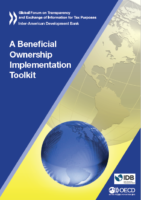
May 2019: New Beneficial Ownership Toolkit will help tackle tax evasion
A beneficial ownership toolkit was released 20. May 2019 in the context of the OECD’s Global Integrity and Anti-Corruption Forum. The toolkit, prepared by the Secretariat of the OECD’s Global Forum on Transparency and Exchange of Information for Tax Purposes in partnership with the Inter-American Development Bank, is intended to help governments implement the Global Forum’s standards on ensuring that law enforcement officials have access to reliable information on who the ultimate beneficial owners are behind a company or other legal entity so that criminals can no longer hide their illicit activities behind opaque legal structures. The toolkit was developed to support Global Forum members and in particular developing countries because the current beneficial ownership standard does not provide a specific method for implementing it. The toolkit covers a variety of important issues regarding beneficial ownership, including: the concepts of beneficial owners and ownership, the criteria used to identify them, the importance of the matter for transparency in the financial and non-financial sectors; technical aspects of beneficial ownership requirements, distinguishing between legal persons and legal arrangements (such as trusts), and measures being taken internationally to ensure the availability of information on beneficial ownership a series of checklists that may be useful in pursuing a specific beneficial ownership framework; ways in which the principles on beneficial ownership can play out in practice in Global Forum EOIR peer reviews; why beneficial ownership information is also a crucial component of the automatic exchange of information regimes being adopted by jurisdictions around the world.

March 2019: EU report on financial crimes, tax evasion and tax avoidance
In March 2018 a special EU committee on financial crimes, tax evasion and tax avoidance (TAX3) was established. Now, one year later, The EU Parliament has approved a controversial report from the committee. According to the report close to 40 % of MNEs’ profits are shifted to tax havens globally each year with some European Union countries appearing to be the prime losers of profit shifting, as 35 % of shifted profits come from EU countries. About 80 % of the profits shifted from EU Member States are channelled to or through a few other EU Member States. The latest estimates of tax evasion within the EU point to a figure of approximately EUR 825 billion per year. Tax avoidance via six EU Member States results in a loss of EUR 42,8 billion in tax revenue in the other 22 Member States, which means that the net payment position of these countries can be offset against the losses they inflict on the tax base of other Member States. For instance, the Netherlands imposes a net cost on the Union as a whole of EUR 11,2 billion, which means the country is depriving other Member States of tax income to the benefit of multinationals and their shareholders. The Commission has criticised seven Member States – Belgium, Cyprus, Hungary, Ireland, Luxembourg, Malta and the Netherlands – for shortcomings in their tax systems that facilitate aggressive tax planning, arguing that they undermine the integrity of the European single market. Member States now calls on the Commission to currently regard at least these five Member States as EU tax havens until substantial tax reforms are implemented.

Transfer Pricing in the Mining Industry
Like other sectors of the economy, there are base erosion and profit shifting risks in the mining sector. Based on the ongoing work on BEPS, the IGF (Intergovernmental Forum on Mining) and OECD has released guidance for source countries on transfer pricing in the mining sector. The transfer pricing and tax avoidance issues identified in the sector are: 1. Excessive Interest Deductions Companies may use related-party debt to shift profit offshore via excessive interest payments to related entities. “Debt shifting” is not unique to mining, but it is particularly significant for mining projects that require high levels of capital investment not directly obtainable from third parties, making substantial related-party borrowing a frequent practice. 2. Abusive Transfer Pricing Transfer pricing occurs when one company sells a good or service to another related company. Because these transactions are internal, they are not subject to market pricing and can be used by multinationals to shift profits to low-tax jurisdictions. Related-party transactions in mining can be broadly grouped into two categories: (1) the sale of minerals and/or mineral rights to related parties; and (2) the purchase or acquisition of various goods, services and assets from related parties. Developing countries require sector-specific expertise to detect and mitigate transfer mispricing in the mining sector. 3. Undervaluation of Mineral Exports Profit shifting via the pricing of mineral products sold to related parties is a major concern for many mineral exporting countries. For developing countries, these risks are elevated where government agencies lack the mineral-testing facilities required to verify the grade and quality of mineral exports, as well as detailed sector-specific knowledge of the mining transformation process and mineral product pricing. 4. Harmfull Tax Incentives Mining and exploration tax incentives are common in developing countries. While tax incentives could encourage expansion of the sector, they may also lead to excess transfers of the gains from countries. It is unrealistic to expect that developing countries will forego incentives entirely due to the pressures of attracting investment. However, it is important that countries understand when tax incentives may be appropriate, how companies are likely to respond to incentives, and the distinction between tax incentives that permanently reduce taxes and from provisions affecting timing impacts. 5. Tax Stabilisation Clauses Fiscal stabilization clauses are problematic from a tax perspective because they can freeze the fiscal terms in the contract such that changes in tax law may not be applicable to existing mines, foregoing significant government revenue. 6. International Tax Treaties Developing countries consistently raise concerns about tax treaty abuse. Countries with abundant mineral resources need particular assistance in this area, considering how treaty provisions might have a significant impact on taxes imposed on the mining sector. 7. Offshore Indirect Transfers of Mining Assets Transfers of ownership of company assets (or the companies themselves) can generate significant income, which many countries seek to tax as capital gains. Transactions may be structured to fall outside the mining country’s tax base by selling shares in an offshore company holding the asset, without notifying tax authorities in the country where the asset/company is located. 8. Metals Streaming Metals streaming involves mining companies selling a certain percentage of their production at a fixed cost to a financier in return for funds for partial or complete mine development and construction. Since the amount of financing provided is linked to the discounted mineral price, companies have strong incentives to agree to lower fixed prices to increase the up-front finance available. Streaming reduces the tax base of resource-producing countries, where royalties and income tax use sales revenue as part of calculations. There is virtually no guidance on these arrangements in the mining tax literature. 9. Abusive Hedging Arrangements Hedging is a legitimate business practice in many commodity markets. It consists of locking in a future-selling price in order for both parties to the transaction to plan their commercial operations with predictability. A problem arises when companies engage in abusive hedging with related parties. They use hedging contracts to set an artificially low sale price for production and therefore record systematic hedging losses, reducing their taxable income. 10. Inadequate Ring-Fencing It is possible that mining companies will have multiple activities within a country, creating opportunities to use losses incurred in one project (e.g., during exploration for a new mine), to offset profits earned in another project, thereby delaying payment of corporate income tax. Ring-fencing is one way of limiting income consolidation for tax purposes; however, getting the design right is critical to securing tax revenues while attracting further investment. The following reports adresses some of these issues: Limiting the impact of Excessive Interest Deductions on Mining Revenue Tax incentives in Mining: Minimising risk to Revenue Comparables Data for Transfer Pricing Analyses – Prices of Minerals Sold in an Intermediate Form Toolkit for Transfer Pricing Risk Assessment in the African Mining Industry Transfer Pricing Cases in Mining and Commodity Case NameDescriptionDateCourtCatagoriesKeywords

April 2019: UN Manual – Financial Transactions and Profit Splits
A new version of the UN Practical Manual on Transfer Pricing for Developing Countries is due by 2021. According to the mandate the new manual will make further improvements in usability and practical relevance, updates and improvements to existing text, including on Country Practices (Part D) and will have new content, in particular, on financial transactions; profit splits, centralized procurement functions and comparability issues. A draft paper was published 8 April 2019 containing further guidance on: • Financial Transactions (Attachment A); • Profit Splits (Attachment B); and • Establishing Transfer Pricing Capability, Risk Assessment and Transfer Pricing Audits (Attachment C).

2018: ATO Taxpayer Alert on Mischaracterisation of activities or payments in connection with intangible assets (TA 2018/2)
The ATO is currently reviewing international arrangements that mischaracterise intangible assets[1] and/or activities or conditions connected with intangible assets. The concerns include whether intangible assets have been appropriately recognised for Australian tax purposes and whether Australian royalty withholding tax obligations have been met. Arrangements that allocate all consideration to tangible goods and/or services, arrangements that allocate no consideration to intangible assets, and arrangements that view intangible assets collectively, or conceal intangible assets, may be more likely to result in a mischaracterisation. Where arrangements are between related parties, we are concerned about whether the: amount deducted by the Australian entity under the arrangement meets the arm’s length requirements of the transfer pricing provisions in the taxation law[2] functions performed, assets used and risked assumed by the Australian entity, in connection with the arrangement, are appropriately compensated in accordance with the arm’s length requirements of the transfer pricing provisions in the taxation law. These arrangements typically display most, if not all, of the following features: intangible assets are developed, maintained, protected or owned by an entity located in a foreign jurisdiction (an ‘IP entity’) the Australian entity enters into an arrangement to undertake an activity or a combination of activities the Australian entity requires the use of the relevant intangible assets in order to undertake these activities the Australian entity purchases goods and/or services from an IP entity or a foreign associate of an IP entity in order to undertake these activities the Australian entity agrees to pay an amount, or a series of amounts, to a foreign entity which the Australian entity does not recognise or treat as wholly or partly being for the use of an IP entity’s intangible assets. This Taxpayer Alert (Alert) does not apply to international arrangements which involve an incidental use of an intangible asset. For example, this Alert does not apply to resellers of finished tangible goods where the activity of reselling the goods involves an incidental use of a brand name that appears on the goods and related packaging. Whether a use is incidental in this sense will depend on an analysis of the true relationship and activities of the parties. The fact that an arrangement fails to expressly provide for the use of an intangible asset does not, in itself, determine that a use is incidental.

March 2019: EU list of Non-Cooperative Tax Jurisdictions – Tax Havens
12 March 2019 the EU Council added ten jurisdictions to the list of Non-Cooperative Tax Jurisdictions – Tax Havens. Non-Cooperative Tax Jurisdictions are those that refused to engage with the EU or to address tax good governance shortcomings. As of March 2019 the EU list of Non-Cooperative Tax Jurisdictions includes 15 countries: American Samoa Barbados Guam Samoa Trinidad and Tobago US Virgin Islands Aruba Belize Bermuda Dominica Fiji Marshall Islands Oman United Arab Emirates Vanuatu
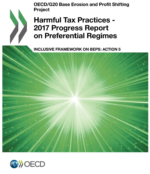
Preferential Tax Regimes – Harmful Tax Practices
On 13 November 2018, the Inclusive Framework on BEPS approved updates to the results of reviews of preferential tax regimes conducted in connection with BEPS Action 5. The data below presents the conclusions of the work on regime reviews. The results are a consolidated update of the regimes reported in Harmful Tax Practices – 2017 Progress Report on Preferential Regimes. Countries with harmfull tax practices – preferential tax regimes – are defined based on the following factors: Where no or low effective tax rates (or negotiable tax rates or bases) are imposed on income from highly mobile assets and activities Where the low tax regime is ring-fenced (separated) from the domestic economy Where there is no transparancy and no exchange of information with other jurisdictions, eg. secrecy provisions Where there is no requirement of substantial economic activities/substance The Inclusive Framework on BEPS has decided to resume the application of the substantial activities requirement for no or only nominal tax jurisdictions. Originally a criteria set out in the harmful tax framework from 1998, it had not been applied to date. However, with the elevation of the substantial activities requirements in preferential regimes, and the broad-based membership of the Inclusive Framework working together on an equal footing, it was considered the right time to ensure that equivalent substance requirements apply in no or only nominal tax jurisdictions. This global standard means that mobile business income cannot be parked in a zero tax jurisdiction without the core business functions having been undertaken by the same business entity, or in the same location. In doing so, the Inclusive Framework will ensure that substantial activities must be performed in respect of the same types of mobile business activities, regardless of whether they take place in a preferential regime or in a no or only nominal tax jurisdiction.
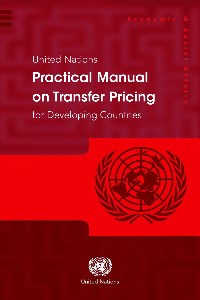
2019 Update-UN-Practical-Manual-on-Transfer-Pricing
On 8 April 2019 the UN subcommittee issued it’s first discussion draft on the future updates to the UN Practical-Manual-on-Transfer-Pricing on Financial transactions, BEPS consistency and Risk Assessment and Audit practices. Attachment A: the proposed new Chapter B on Financial Transactions. The draft discusses the importance of corporate financing decisions within multinational groups and how those decisions could lead to tax base The Chapter discusses interaction with rules and measures against base erosion; common types of intra- group financial transactions and of group financing departments; the process of actual delineation and relevant characteristics of financial transactions; the process and system of credit rating; potential transfer pricing methods, including the use of simplification measures/safe harbours; different types of intra group loans and relevant characteristics; determining the arm’s length nature of intra-group loans; different types of intra group financial guarantees and relevant characteristics; determining the arm’s length nature of intra-group financial guarantees; and available methods. The chapter also discusses cash pooling practices and captive insurance, without getting into further detail on the delineation and arm’s length pricing of those specific transactions. Different types of intra-group loans are mentioned, and the draft identifies four steps to determine the arm’s length nature of intra-group loans: (i) analyse economically relevant characteristics; (ii) accurately delineate the entire transaction undertaken as well as (iii) selection and (iv) application, of the most appropriate transfer pricing method. The Subcommittee has not yet discussed any of the examples in shaded text and comments are therefore not invited for discussion at this Session of the Committee. Attachment B: Revision to the guidance contained in the Manual on the transactional profit-split method (Chapter 3.3.) with the main focus being on seeking consistency of this guidance with the work done in the context of the Inclusive Framework on BEPS, while providing more practical examples. The draft includes the existing text side-by-side with the proposed revisions for better understanding. The draft is ready for Committee consideration, with one exception. Shaded text, such as on the use of “hindsight”, will need further Subcommittee discussion before a draft is ready for Committee consideration and comments are therefore not invited for discussion at this Session of the Committee. Attachment C: A progress draft of the work on sections C.2. Establishing Transfer Pricing Capability in Developing Countries (previously C.5.); C.4. Risk Assessment (Previously part of C.3.) and C.5. Transfer Pricing Audits. The purpose is mainly to streamline the sequences of presentation and to eliminate overlaps in the current

2019: ATO draft on compliance approach to the arm’s length debt test
The draft Guideline provides guidance to entities in applying the arm’s length debt test in Division 820 of the Income Tax Assessment Act 19972 and should be read in conjunction with draft Taxation Ruling TR 2019/D2 Income tax: thin capitalisation – the arm’s length debt test. This Guideline also provides a risk assessment framework that outlines our compliance approach to an application of the arm’s length debt test in certain circumstances that are identified as low risk. The arm’s length debt test is one of the tests available to establish an entity’s maximum allowable debt for thin capitalisation purposes. The test focuses on identifying an amount of debt a notional stand-alone Australian business would reasonably be expected to borrow, and what independent commercial lenders would reasonably be expected to lend on arm’s length terms and conditions. An entity’s debt deductions are reduced to the extent that its adjusted average debt exceeds its maximum allowable debt. The arm’s length debt test may be used to support debt deductions for commercially justifiable levels of debt. In practice, the test is typically only used when an entity is unable to satisfy the safe harbour and worldwide gearing tests (as the compliance burden of applying these tests is generally lower). It is not common for Australian businesses to gear in excess of 60% of their net assets and historically relatively few entities have applied the arm’s length debt test. We consider the choice to apply the arm’s length debt test carries with it the necessity to undertake more rigorous analysis than the safe harbour and worldwide gearing tests. While the arm’s length debt test in some respects draws upon arm’s length concepts that are broadly common to transfer pricing, the test itself is not a transfer pricing analysis, nor does it necessarily proxy an outcome consistent with the arm’s length conditions under Subdivision 815-B. Rather it requires an overlay of factual assumptions that produce a hypothetical entity against which specific factors are to be assessed. This Guideline is limited to providing guidance and a risk assessment framework relating to the application of the arm’s length debt test contained in sections 820-105 and 820-215. It does not set out our approach to reviewing other taxation issues that might arise in relation to debt deductions.
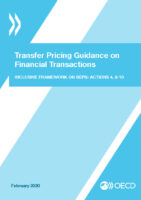
New TPG Chapter X on Financial Transactions (and additions to TPG Chapter I) released by OECD
In February 2020, OECD released the report Transfer Pricing Guidance on Financial Transactions. The guidance in the report describes the transfer pricing aspects of financial transactions and includes a number of examples to illustrate the principles discussed in the report. Section B provides guidance on the application of the principles contained in Section D.1 of Chapter I of the OECD Transfer Pricing Guidelines to financial transactions. In particular, Section B.1 of this report elaborates on how the accurate delineation analysis under Chapter I applies to the capital structure of an MNE within an MNE group. It also clarifies that the guidance included in that section does not prevent countries from implementing approaches to address capital structure and interest deductibility under their domestic legislation. Section B.2 outlines the economically relevant characteristics that inform the analysis of the terms and conditions of financial transactions. Sections C, D and E address specific issues related to the pricing of financial transactions (e.g. treasury functions, intra-group loans, cash pooling, hedging, guarantees and captive insurance). This analysis elaborates on both the accurate delineation and the pricing of the controlled financial transactions. Finally, Section F provides guidance on how to determine a risk-free rate of return and a risk-adjusted rate of return. Sections A to E of this report are included in the OECD Transfer Pricing Guidelines as Chapter X. Section F is added to Section D.1.2.1 in Chapter I of the Guidelines, immediately following paragraph 1.106.

2020: ATO Alert on arrangements and schemes connected with DEMPE of intangibles
The ATO is currently reviewing international arrangements that mischaracterise Australian activities connected with the development, enhancement, maintenance, protection and exploitation (DEMPE) of intangible assets. Such arrangements may be non-arm’s length or structured to avoid tax obligations, resulting in inappropriate outcomes for Australian tax purposes. One of the issues is whether functions performed, assets used and risks assumed by Australian entities in connection with the DEMPE of intangible assets are properly recognised and remunerated in accordance with the arm’s length requirements of the transfer pricing provisions in the taxation law. These arrangements are particularly in focus where intangible assets and/or associated rights are migrated to international related parties as part of non-arm’s length arrangements and/or in a manner intended to avoid Australian tax. In circumstances where these arrangements lack evidence of commercial rationale and/or substance, the ATO will apply of the exceptions in the transfer pricing provisions (non-recognition) and anti-avoidance rules. The general anti-avoidance rule (GAAR) or diverted profits tax (DPT) provisions may apply where a tax benefit or DPT tax benefit is obtained in connection with these arrangements. Arrangements of particular concern include, but are not limited to, those described in the Alert.
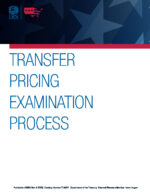
September 2020: IRS Guide to the Transfer Pricing Examination Process
September 8, 2020 the IRS released a new guide to Transfer Pricing Examination Process. The Transfer Pricing Examination Process (TPEP) provides a guide to best practices and processes to assist with the planning, execution, and resolution of transfer pricing examinations consistent with the Large Business & International (LB&I) Examination Process (LEP), Publication 5125. This guide will be shared with taxpayers at the start of a transfer pricing examination, so they understand the process and can work effectively with the examination team. Transfer pricing examinations are factually intensive and require a thorough analysis of functions performed, assets employed, and risks assumed along with an accurate understanding of relevant financial information. They are resource intensive for both the IRS and taxpayers. To ensure resources are applied effectively, LB&I is using data analytics to identify issues for examination that have the most significant risk for non-compliance. In addition, teams should continually assess the merits of issues during an examination. Our goal in a transfer pricing examination is to determine an arm’s length result under the facts and circumstances of the case. Teams should keep an open mind during an examination to new facts as they are identified. Arm’s length results are rarely a precise answer, but instead may be a range of results. If the facts of the case show that the taxpayer’s results fall within an appropriate arm’s length range, then our resources should be applied elsewhere. Likewise, teams should continually assess opportunities for issue resolution with taxpayers during the examination process. The TPEP provides a framework and guide for transfer pricing examinations.
New German Administrative Ordinance on transfer pricing issues AO 2020, DOK 2020/1174240
In december 2020 the Federal Ministry of Finance in German issued a new administrative ordinance related to various transfer pricing issues. Among the issues are enhanced requirement to cooperate and submit additional documentation related to controlled transactions, but most notable may be the conditions under which estimated tax assessments can be issued. Below is an unofficial translation of the document. Click here for the original document
Peru – report on use of the most appropriate method to determine the market value of services
In december 2020 the tax authorities in Peru issued a new administrative ordinance related to use of the most appropriate method to determine the market value of services. Click here for English translation
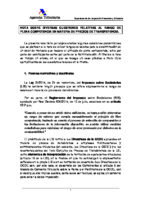
Spain releases note on arm’s length range and benchmarking.
On 25 February 2021, a note was released by the Spanish Tax Agency on number of practical issues relating to application of the arm’s-length range. The note – which is based on the OECD transfer Pricing Guidelines, guidance on benchmark studies issued by the Joint Transfer Pricing Forum, and relevant Spanish case laws – answers the following questions – How is the range of values determined? – Is it possible to determine a range of values in which the figures are relatively equally reliable? – How to proceed if a range is determined in which all figures are not relatively equally reliable? – When should statistical tools be used to narrow the range? – What should be done if there is a wide dispersion in the range? – Where in the range should the value of the linked transactions be selected? – When can the administration adjust the values used by the taxpayer in its controlled transactions covered by a range of values? The note concludes that – Any transfer pricing adjustment requires justification that the value declared by the taxpayer does not comply with the arm’s length principle. – While in some cases it will be possible to determine a single figure as a more reliable benchmark to establish whether a transaction is at arm’s length, in many cases the application of the most appropriate valuation method will lead to a range of figures. – In determining a range of arm’s length values, those transactions with a lower degree of comparability should be eliminated. Also, to the extent that comparability can be improved and where possible, comparability adjustments should be made for those values that require them. However, it is common for a lack of information to prevent such adjustments from being made. – A range of values with a wide dispersion is often indicative of comparability defects in the values that determine the range and should lead to a more detailed analysis. – After such refinements, a range of values could be obtained in which all results are very reliable and relatively equal. In this case, any point in the range complies with the arm’s length principle and therefore no adjustment is appropriate if the value reported by the taxpayer is within the range. If it is outside the range, the adjustment will take the value of the controlled transaction to the value that is closest within the range. – In practice, the range will usually not comprise very reliable and relatively equal results. In this case, once the least comparable results have been eliminated, if there are still defects in comparability that cannot be identified or quantified (and therefore cannot be adjusted for), statistical tools are commonly used which, while not eliminating these defects in comparability, improve the reliability of the analysis. This is achieved by narrowing the range by using only those values between the 1st and 3rd quartiles. – In this case, if the value declared by the taxpayer is within the arm’s length range (whether declared by the taxpayer and accepted by the government or determined by the government), no adjustments should be made. – If, on the other hand, the value declared by the taxpayer is outside the range, the adjustment should generally be made to the median. This is unless, as expressly stated in EU doctrine, after a thorough analysis of the facts and circumstances of the case, there is justification for choosing another particular point in the range, with the burden of proof falling on the person seeking to assert that other point. Click here for English translation
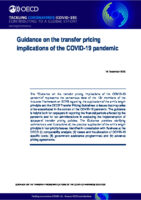
OECD Guidance on the transfer pricing implications of the COVID-19 pandemic
Unique economic conditions arising from COVID-19 and government responses to the pandemic have led to practical challenges for the application of the arm’s length principle. For taxpayers applying transfer pricing rules for the financial years impacted by the COVID-19 pandemic and for tax administrations that will be evaluating this application, there is an urgent need to address these practical questions. The OECD Transfer Pricing Guidelines for Multinational Enterprises and Tax Administrations 2017 (“OECD TPG”) are intended to help tax administrations and multinational enterprises (“MNEs”) find mutually satisfactory solutions to transfer pricing cases and should continue to be relied upon when performing a transfer pricing analysis, including under the possibly unique circumstances introduced by the pandemic. Accordingly, guidance have been issued focusing on how the arm’s length principle and the OECD TPG apply to issues that may arise or be exacerbated in the context of the COVID-19 pandemic, rather than on developing specialised guidance beyond what is currently addressed in the OECD TPG. Follow this link to see the COVID-19 guidance with relevant keywords and TPG references. The guidance focuses on four priority issues: (i) comparability analysis; (ii) losses and the allocation of COVID-19 specific costs; (iii) government assistance programmes; and (iv) advance pricing agreements (“APAs”); where it is recognised that the additional practical challenges posed by COVID-19 are most significant.
EU: Public Country-by-Country Reporting?
Proposal directive of public country-by-country reporting in the EU Ministers held an exchange of views (public session) on how to take the proposed directive forward. Tax transparency is a fundamental principle in any democratic society. It enables policy makers to take informed decisions and to ensure that all economic actors contribute in a fair and equitable manner to the economy of the various countries where they conduct their business. Today’s debate has opened the way for the proposed directive to move forward as a matter of priority. Pedro Siza Vieira, Portuguese Minister of State for the Economy and Digital Transition A clear majority of ministers were of the view that the latest consolidated presidency proposal is technically mature. They invited the Portuguese presidency to seek a negotiating mandate without delay in order to explore with the European Parliament the possibility of a deal for the swift adoption of the directive. The Portuguese presidency concluded that there was political support for it to seek a negotiating mandate in order to explore with the European Parliament the possibility of a deal for the swift adoption of the proposed directive. (Source: European Council)
UN agrees on inclusion of Article 12B to the UN Model Tax Treaty – computer software
On 26. April 2021 the UN released agreed changes to the commentary on Article 12 of the United Nations Model Double Taxation Convention reflecting decisions made with respect to the inclusion of Article 12B and the treatment of computer software.
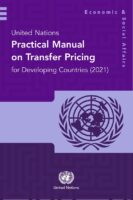
UN releases New 2021 Practical Manual on Transfer Pricing
On 27 April UN released a new 2021 Practical Manual on Transfer Pricing. “…this third edition of the Manual makes improvements in usability and practical relevance, updates and improves the existing text, including on Country Practices (Part D) and has new content, in particular, on financial transactions, profit splits, centralized procurement functions and comparability issues. Improved capacity development based on the Manual has encouraged and contextualized developing country feedback, helped identify these priority areas for improvement and contributed to better targeting the messages in the Manual and examples used.” The changes in the new edition of the Manual include: • A revised format and a rearrangement of some parts of the Manual for clarity and ease of understanding, including a reorganization into four parts as follows: – Part A relates to transfer pricing in a global environment; – Part B contains guidance on design principles and policy considerations; this Part covers the substantive guidance on the arm’s length principle, with Chapter B.1. providing an overview, while Chapters B.2. to B.7. provide detailed discussion on the key topics. Chapter B.8. then demonstrates how some countries have established a legal framework to apply these principles; – Part C addresses practical implementation of a transfer pricing regime in developing countries; and – Part D contains country practices, similarly to Chapter 10 of the previous edition of the Manual. A new statement of Mexican country practices is included and other statements are updated; • A new chapter on intra-group services; • A new chapter on cost contribution arrangements; • A new chapter on the treatment of intangibles; • Significant updating of other chapters; and • An index to make the contents more easily accessible.
Paraguay’s TP Decree in effect as of April 2021
Paraguay’s new Transfer Pricing Decree in effect as of April 2021. Click here for English Translation

Australia finalises compliance guideline on intangibles migration arrangements – PCG 2024/1
17 January 2024 the Australian Taxation Office published the final version of its Practical Compliance Guideline PCG 2024/1 Intangibles migration arrangements. The PCG has previously been released in drafts as PCG 2021/D4 and PCG 2023/D2 Intangibles arrangements. The final version sets out ATO’s compliance approach to the tax risks associated with certain cross-border related party intangibles arrangements involving: restructures or changes to arrangements involving intangible assets (referred to as ‘migrations’ in the PCG) the mischaracterisation or non-recognition of Australian activities connected with intangible assets. Changes and additions included in the final version: further clarification of the arrangements in scope exclusion of certain arrangements (‘Excluded Intangibles Arrangement’) from the scope inclusion of a ‘white zone’ for arrangements that have been subject to previous ATO audit or reviews further explaining our compliance approach, including the engagement taxpayers can expect based on the compliance risks associated with an arrangement expanding the guidance allowing taxpayers to group intangible assets or arrangements to make it easier for taxpayers apply the PCG providing more information on the reporting requirements taxpayers can expect to complete the reportable tax position schedule.

2023: ATO Draft Practical Compliance Guidelines on Intangibles Arrangements, PCG 2023/D2
The Australian Taxation Office (ATO) has released a new draft of Compliance Guidelines on Intangible Arrangements, PCG 2023/D2. When finalised, the guidelines will set out the ATO’s compliance approach to the development, use and transfer of intangible assets. The guidelines focus on tax risks associated with the potential application of the transfer pricing provisions, withholding tax provisions, capital gains tax (CGT), capital allowances, the general anti-avoidance rule (GAAR) and the diverted profits tax (DPT). Examples of high-risk intangibles arrangements under the draft guidelines include centralisation of intangible assets bifurcation (separation) of intangible assets non-recognition of local intangible assets and DEMPE activities migration of pre-commercialised intangible assets (HTVI) transfer of intangibles assets to a foreign hybrid entity

2021: ATO Draft Practical Compliance Guidelines on Intangibles Arrangements, PCG 2021/D4
The Australian Taxation Office (ATO) has issued draft Compliance Guidelines on intangible arrangements, PCG 2021/D4. These Guidelines will (when finalised) set out the ATO’s compliance approach to international arrangements connected with the development, enhancement, maintenance, protection and exploitation of intangible assets, specifically, the potential application of the transfer pricing, general anti-avoidance rule (GAAR) and the diverted profits tax (DPT) provisions. The capital gains tax and capital allowances provisions will also be discussed in this Guideline where these may be considered alongside, or relevant to, the ATO’s transfer pricing, GAAR or DPT risk assessment. The draft Guidelines sets out ATO’s compliance approach to international arrangements connected with the development, enhancement, maintenance, protection and exploitation (DEMPE) of intangible assets and/or involving a migration of intangible assets. The Guidelines applies to Intangibles Arrangements and focuses on tax risks associated with the potential application of the transfer pricing provisions. It also focuses on other tax risks that may be associated with Intangibles Arrangements, specifically the withholding tax provisions, capital gains tax (CGT), capital allowances, the general anti-avoidance rule (GAAR) and the diverted profits tax (DPT). The Guidelines has been prepared to accompany the release and publication of Taxpayer Alerts TA 2018/2 Mischaracterisation of activities or payments in connection with intangible assets and TA 2020/1 Non-arm’s length arrangements and schemes connected with the development, enhancement, maintenance, protection and exploitation of intangible assets. It is not the intention of the Guidelines to limit, deter or prevent arm’s length dealings involving intangible assets. Rather it is intended that the Guideline will serve as a point of reference and assist in understanding arrangements which is seen as representing a higher risk from a compliance perspective. Examples of high risk arrangements centralisation of intangible assets bifurcation (separation) of intangible assets non-recognition of local intangible assets and DEMPE activities migration of pre-commercialised intangible assets non-arm’s length licence arrangements

OECD: Fighting Tax Crime – The Ten Global Principles, Second Edition
“Fighting Tax Crime – The Ten Global Principles” is a comprehensive guide to fighting tax crimes published by the OECD. Read the online report here. The report sets out ten essential principles covering the legal, institutional, administrative, and operational aspects necessary for developing an efficient and effective system for identifying, investigating and prosecuting tax crimes, while respecting the rights of accused taxpayers. The guidance also addresses new challenges, such as tackling professionals who enable tax and white-collar crimes, and fostering international co-operation in the recovery of assets. Drawing on the experiences of jurisdictions in all continents, the report also highlights successful cases relating to the misuse of virtual assets, complex investigations involving joint task forces, and the use of new technology tools to fight tax crimes and other financial crimes. The ten principles are 1Ensure tax offences are criminalisedJurisdictions should have the legal framework in place to ensure that violations of tax law are included as a criminal offence, and that effective sanctions apply in practice. 2Devise an effective strategy for addressing tax crimesIn order to ensure the effectiveness of the law on tax crimes, jurisdictions should have a strategy for addressing tax crimes. The strategy should be regularly reviewed and monitored. 3Have adequate investigative powersJurisdictions must have appropriate investigative powers to successfully investigate tax crimes. 4Have effective powers to freeze, seize and confiscate assetsJurisdictions should have the ability to freeze / seize assets in the course of a tax crime investigation, and the ability to confiscate assets. 5Put in place an organisational structure with defined responsibilitiesA Jurisdiction should have an organisational model with defined responsibilities for fighting tax crime and other financial crime. 6Provide adequate resources for tax crime investigationTax crime investigation agencies should have adequate resources. 7Make tax crimes a predicate offence for money launderingJurisdictions should designate tax crimes as one of the predicate offences for money laundering. 8Have an effective framework for domestic inter-agency co-operationJurisdictions should have an effective legal and administrative framework to facilitate collaboration between tax authorities and other domestic law enforcement and intelligence agencies. 9Ensure international co-operation mechanisms are availableTax crime investigation agencies must have access to criminal legal instruments and an adequate operational framework for effective international co-operation in the investigation and prosecution of tax crimes. 10Protect suspects’ rightsTaxpayers suspected or accused of committing a tax crime must be able to rely on basic procedural and fundamental rights. Alongside the policy document, the report has 33 country chapters, detailing jurisdictions’ domestic tax crime enforcement frameworks as well as the progress made in implementing the Ten Global Principles. These country chapters of the repost are available here.

German TP-Legislation updated as of June 2021
German legislation on transfer pricing has been updated to align the rules with the OECD Transfer Pricing Guidelines 2017. The new amendments are effective as of fiscal year 2022. The rules includes revised content on Substance over form Risk analysis Best method rule Use of interquartile range Aggregation of transactions Determination of actual ownership vs legal ownership DEMPE functions Valuation of Hard to value intangibles Unofficial translation of the new amendments to the German TP legislation Article 5 Amendment of the Foreign Tax Act The Foreign Tax Act of 8 September 1972 (BGBl. I p. 1713), as last amended by Article 4 of the Act of 25 March 2019 (BGBl. I p. 357), shall be amended as follows: section 1 shall be amended as follows: (a) Paragraph 1 shall be amended as follows: aa) In sentence 1, the words “related” shall be replaced by the word “related”. bb) In sentence 2, the words “and within the meaning of § 1a” shall be inserted after the word “provision”. (b) Paragraph 3 shall be replaced by the following paragraphs 3 to 3c: “(3) For the determination of the transfer prices (arm’s length prices) corresponding to the arm’s length principle for a business relationship within the meaning of paragraph 1 sentence 1, the actual circumstances underlying the respective business transaction shall be decisive. In particular, it shall be taken into account which functions are performed by which person involved in the business transaction in relation to the respective business transaction, which risks are assumed in this respect and which assets are used for this purpose (function and risk analysis). The relationships within the meaning of sentences 1 and 2 shall form the standard for determining the comparability of the business transaction to be examined with business transactions between unrelated third parties (comparability analysis); the relationships on which these business transactions are based shall be decisive in the corresponding application of sentences 1 and 2, insofar as this is possible. The circumstances at the time of the agreement of the business transaction shall be taken into account. The arm’s length price shall in principle be determined according to the most appropriate transfer pricing method with regard to the comparability analysis and the availability of values for comparable transactions of independent third parties. Differences between the ratios of the arm’s length transactions used for comparison and the ratios underlying the transaction under review that may affect the application of the transfer pricing method shall be eliminated by appropriate adjustments, if possible; this shall only apply if comparability is thereby enhanced. If no comparative values can be determined, a hypothetical arm’s length comparison shall be carried out for the determination of the arm’s length price in compliance with paragraph 1 sentence 3 from the perspective of the supplier and the respective service recipient using economically recognised valuation methods. (3a) The application of the arm’s length principle regularly leads to a range of values. This range shall be narrowed if differences in comparability remain after application of paragraph 3 sentence 6. If these values themselves do not offer any indications for a certain narrowing, the quarter of the smallest and the quarter of the largest values shall be disregarded from this range. If the value used by the taxpayer to determine his income lies outside the range pursuant to sentence 1 or the narrowed range, the median shall be decisive if the taxpayer does not credibly demonstrate that another value complies with the arm’s length principle. When applying the hypothetical arm’s length principle according to paragraph 3, sentence 7, a range of agreement regularly results from the minimum price of the supplier and the maximum price of the service recipient. In the cases of sentence 5, the mean value of the agreement range shall be used as a basis if the taxable person does not credibly demonstrate that another value within the agreement range complies with the arm’s length principle. (3b) If a function, including the associated opportunities and risks as well as the assets or other benefits transferred along with the function, is transferred and paragraph 3 sentence 7 is to be applied to the transferred function because no comparative data can be determined for the transfer of the function as a whole (transfer package), the agreement range shall be determined on the basis of the transfer package. This may be waived if the taxpayer can credibly demonstrate that neither significant intangible assets nor other benefits were the subject of the transfer of function. This applies if the receiving company performs the transferred function exclusively vis-à-vis the transferring company and the consideration to be recognised for the performance of the function and the provision of the corresponding services is to be determined according to the cost-plus method. (3c. A transfer or assignment for use of an intangible asset shall be remunerated if it is made on the basis of a business relationship as defined in paragraph 4 and it has a financial effect on the transferee, the user, the transferor or the assignor. Intangible assets are assets that are neither tangible assets nor equity interests nor financial assets which may be the subject of a transaction without being individually transferable; and which can give a person an actual or legal position over that asset. The identification of the ownership or holder of an intangible asset, including rights derived from such an asset, is the starting point for determining which party to the transaction is entitled to the revenue arising from any disposition of that intangible asset. To the extent that a related party of the owner or holder of the intangible asset performs functions, uses assets or assumes risks in connection with the development or creation, enhancement, maintenance, protection or any form of exploitation of the intangible asset, those functions shall be appropriately compensated by the owner or holder of the related party. The financing of the development or creation, maintenance or protection of an intangible asset shall be appropriately remunerated and shall not give rise
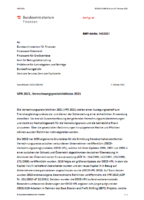
Austrian Ministry of Finance issues Updated Local Transfer Pricing Guidelines (VPR 2021)
In October 2021 the Austrian Ministry of Finance issues updated local transfer pricing guidelines – VPR 2021 The Transfer Pricing Guidelines 2021 (VPR 2021) are an interpretative aid to the arm’s length principle and serve to ensure its uniform application. They are to be regarded as a summary of the applicable transfer pricing provisions and thus as a reference work for administrative and operational practice. Rights and obligations that go beyond the statutory provisions cannot be derived from the guidelines. In 1995, the OECD published general principles for the determination of arm’s length transfer prices between associated enterprises (OECD Transfer Pricing Principles; OECD TPG), which were published with their updates in 1996, 1997 and 1998 in a German translation agreed between Switzerland and Austria in the Official Gazette of the Austrian Tax Administration (AÖF No. 114/1996, 122/1997, 155/1998, 171/2000). In 2010, a major update of the OECD TPG followed, in which Chapters I to III were revised in depth and a new Chapter IX relating to corporate reorganisations was added (OECD TPG 2010). Based on this, Austria’s own guidelines were published for the first time in 2010: the VPR 2010 (AÖF No. 221/2010 idF 22/2011). Since then, the OECD TPG have been continuously developed. Particularly comprehensive changes to the OECD TPG have recently resulted from the OECD/G20 work in the context of the Base Erosion and Profit Shifting (BEPS) project which VPR 2021 GZ 2021-0.586.616 of 07 October 2021 resulted in an update in 2017 (OECD-TPG 2017). Therefore, there is a need for a fundamental revision of the VPR 2010, a repeal of the existing enactments and a new promulgation of the VPR (VPR 2021). Within the scope of this fundamental revision, the previous structure of the VPR was largely retained, but some very comprehensive additions were necessary. In addition, the latest version of the BMF Info on the Transfer Pricing Documentation Act (BMF Info of 17 December 2019, BMF-010221/0395-IV/8/2019) was incorporated into the VPR as section 3.2. For reasons of clarity and transparency, the VPR are therefore newly promulgated. The VPR 2021 replace the Transfer Pricing Guidelines 2010 (VPR 2010). Link to Austrian Local Transfer Pricing Guidelines 2021 Unofficial English Translation

Spain releases report on application of their General Anti-Abuse Rule.
The Spanish tax authorities have published a report on the applicability of their domestic General Anti-Abuse Rule (GAAR). In the report, a conduit arrangement aimed at benefiting from an exemption at source on the payment of interest to EU residents is described. Click here for English translation

OECD releases Pillar Two model rules – Global Minimum Tax of 15%
The OECD has published detailed rules to assist in the implementation of a landmark reform to the international tax system, which will ensure Multinational Enterprises (MNEs) will be subject to a minimum 15% tax rate from 2023. The Pillar Two model rules provide governments a precise template for taking forward the two-pillar solution to address the tax challenges arising from digitalisation and globalisation of the economy agreed in October 2021 by 137 countries and jurisdictions under the OECD/G20 Inclusive Framework on BEPS. The rules define the scope and set out the mechanism for the so-called Global Anti-Base Erosion (GloBE) rules under Pillar Two, which will introduce a global minimum corporate tax rate set at 15%. The minimum tax will apply to MNEs with revenue above EUR 750 million and is estimated to generate around USD 150 billion in additional global tax revenues annually. The GloBE rules provide for a co-ordinated system of taxation intended to ensure large MNE groups pay this minimum level of tax on income arising in each of the jurisdictions in which they operate. The rules create a “top-up tax” to be applied on profits in any jurisdiction whenever the effective tax rate, determined on a jurisdictional basis, is below the minimum 15% rate. The new Pillar Two model rules will assist countries to bring the GloBE rules into domestic legislation in 2022. They provide for a co-ordinated system of interlocking rules that: define the MNEs within the scope of the minimum tax; set out a mechanism for calculating an MNE’s effective tax rate on a jurisdictional basis, and for determining the amount of top-up tax payable under the rules; and impose the top-up tax on a member of the MNE group in accordance with an agreed rule order. The Pillar Two model rules also address the treatment of acquisitions and disposals of group members and include specific rules to deal with particular holding structures and tax neutrality regimes. Finally, the rules address administrative aspects, including information filing requirements, and provide for transitional rules for MNEs that become subject to the global minimum tax. In early 2022, the OECD will release the Commentary relating to the model rules and address co-existence with the US Global Intangible Low-Taxed Income (GILTI) rules. This will be followed by the development of an implementation framework focused on administrative, compliance and co-ordination issues relating to Pillar Two. The Inclusive Framework is also developing the model provision for a Subject to Tax Rule, together with a multilateral instrument for its implementation, to be released in the early part of 2022. A public consultation event on the implementation framework will be held in February and on the Subject to Tax Rule in March.
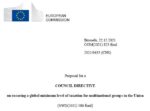
December 2021 – EU directive on minimum effective tax rate – implementation of OECD Pillar II
The European Commission has proposed a Directive ensuring a minimum effective tax rate for the global activities of large multinational groups. The proposal delivers on the EU’s pledge to move extremely swiftly and be among the first to implement the recent historic global tax reform agreement, which aims to bring fairness, transparency and stability to the international corporate tax framework. The proposed directive follows closely the international agreement and sets out how the principles of the 15% effective tax rate – agreed by 137 countries – will be applied in practice within the EU. It includes a common set of rules on how to calculate this effective tax rate, so that it is properly and consistently applied across the EU. The proposed rules will apply to any large group, both domestic and international, with a parent company or a subsidiary situated in an EU Member State. If the minimum effective rate is not imposed by the country where a low-taxed company is based, there are provisions for the Member State of the parent company to apply a “top-up” tax. The proposal also ensures effective taxation in situations where the parent company is situated outside the EU in a low-tax country which does not apply equivalent rules. In line with the global agreement, the proposal also provides for certain exceptions. To reduce the impact on groups carrying out real economic activities, companies will be able to exclude an amount of income equal to 5% of the value of tangible assets and 5% of payroll. The rules also provide for an exclusion of minimal amounts of profit, to reduce the compliance burden in low risk situations. This means that when the average profit and revenues of a multinational group in a jurisdiction are below certain minimum thresholds, then that income is not taken into account in the calculation of the rate. Background Minimum corporate taxation is one of the two work streams of the global agreement – the other is the partial re-allocation of taxing rights (known as Pillar 1). This will adapt the international rules on how the taxation of corporate profits of the largest and most profitable multinationals is shared amongst countries, to reflect the changing nature of business models and the ability of companies to do business without a physical presence. The Commission will also make a proposal on the reallocation of taxing rights in 2022, once the technical aspects of the multilateral convention are agreed.
Finnish TP-Legislation updated to include non-recognition and recharacterisation
Effective as of 1. January 2022 Finnish Transfer Pricing legislation has been updated to align the rules with the OECD Transfer Pricing Guidelines in regards to non-recognition and recharacterisation. Going forward the arm’s length provision in the Tax Procedure Act, section 31, will include the possibility for non-recognition and recharacterisation which according to Finnish Case Law has not been possible under the previous wording of the provision.
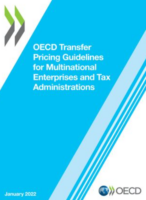
OECD releases the 2022 edition of the OECD Transfer Pricing Guidelines
On 20 January 2022 the OECD released the 2022 edition of the OECD Transfer Pricing Guidelines for Multinational Enterprises and Tax Administrations. The OECD Transfer Pricing Guidelines provide guidance on the application of the “arm’s length principle”, which represents the international consensus on the valuation, for income tax purposes, of cross-border transactions between associated enterprises. In today’s economy where multinational enterprises play an increasingly prominent role, transfer pricing continues to be high on the agenda of tax administrations and taxpayers alike. Governments need to ensure that the taxable profits of MNEs are not artificially shifted out of their jurisdiction and that the tax base reported by MNEs in their country reflects the economic activity undertaken therein and taxpayers need clear guidance on the proper application of the arm’s length principle. This latest edition consolidates into a single publication the changes to the 2017 edition of the Transfer Pricing Guidelines resulting from: The report Revised Guidance on the Transactional Profit Split Method, approved by the OECD/G20 Inclusive Framework on BEPS on 4 June 2018, and which replaced the guidance in Chapter II, Section C (paragraphs 2.114-2.151) found in the 2017 Transfer Pricing Guidelines and Annexes II and III to Chapter II; The report Guidance for Tax Administrations on the Application of the Approach to Hard-to-Value Intangibles, approved by the OECD/G20 Inclusive Framework on BEPS on 4 June 2018, which has been incorporated as Annex II to Chapter VI; The report Transfer Pricing Guidance on Financial Transactions, adopted by the OECD/G20 Inclusive Framework on BEPS on 20 January 2020, which has been incorporated into Chapter I (new Section D.1.2.2) and in a new Chapter X; The consistency changes to the rest of the OECD Transfer Pricing Guidelines needed to produce this consolidated version of the Transfer Pricing Guidelines, which were approved by the OECD/G20 Inclusive Framework on BEPS on 7 January 2022. The OECD guidance developed in regards of COVID 19 is not included in the new 2022 guidelines but is instead kept as a separate intermediate guidance. Buy an online pdf version or book version of the new 2022 Transfer Pricing Guidelines at https://oe.cd/tpg2022

South African Revenue Service releases comprehensive Interpretation Note on intra-group loans
The South African Revenue Service (SARS) has published a comprehensive Interpretation Note on intra-group loans. The note provides taxpayers with guidance on the application of the arm’s length principle in the context of the pricing of intra-group loans. The pricing of intra-group loans includes a consideration of both the amount of debt and the cost of the debt. An intra-group loan would be incorrectly priced if the amount of debt funding, the cost of the debt or both are excessive compared to what is arm’s length. The Note also provides guidance on the consequences for a taxpayer if the amount of debt, the cost of debt or both are not arm’s length. The guidance and examples provided are not an exhaustive consideration of every issue that might arise. Each case will be decided on its own merits taking into account its specific facts and circumstances. The application of the arm’s length principle is inherently of a detailed factual nature and takes into account a wide range of factors particular to the specific taxpayer concerned.

Italy releases operational instructions on arm’s length range and benchmarking.
On 24 May 2022, the Italian Tax Agency (Agenzia delle Entrate) released CIRCULAR NO. 16/E containing operational instructions on issues relating to application of the arm’s length range. The circular – which is based on the OECD transfer Pricing Guidelines, guidance on benchmark studies issued by the Joint Transfer Pricing Forum, and relevant Italian case laws – provides operational instructions regarding the correct interpretation of the notion of “arm’s length range”, as also specified in Article 6 of the Decree of 14 May 2018, when applying the provisions set forth in Article 110, paragraph 7, of the Consolidated Income Tax Act or of the provisions contained in the Double Taxation Treaties entered into by Italy in accordance with Article 9 of the OECD Model Convention. The operational instructions concludes as follows the correct application of the most appropriate transfer pricing method may, instead of a single value, lead to a range of values all complying with the arm’s length principle; in such cases, the full range of values within the arm’s length range may be used if all the transactions identified in the range are equally comparable; if, on the other hand, some of the transactions within the range show defects of comparability that cannot be reliably identified or quantified and, therefore adjusted, the use of ‘statistical tools’ (in order to strengthen their reliability) and a value within the narrow range is preferable. Recourse, on the other hand, to a value as central as possible within the range (also in order to minimise the risk of error due to the presence of such defects) must be limited to cases in which the range does not include values characterised by a sufficient degree of comparability even to consider reliable any point within the narrow range by means of statistical tools and must, in any case, be specifically justified; Therefore, it will be the responsibility of the Offices to resort to the “full range” for the purpose of identifying the arm’s length range only in those cases in which a perfect comparability of all the observations of the set with the “tested party” can be discerned. In conclusion, in recalling once again that according to the OECD Guidelines the identification of a set of values could be symptomatic of the fact that the application of the arm’s length principle allows in certain circumstances to reach only an approximation of the conditions that would have been established between independent enterprises, it is recommended that the adjustments involving the identification of the point that best satisfies the arm’s length principle within the range be argued in detail. Click here for English translation Click here for other translation
The Netherlands releases New 2022 Decree on application of the Arm’s Length Principle
On 1 July 2022, the tax authorities in the Netherlands published Decree No. 2022-0000139020 of 14 June 2022 containing local guidance on application of the arm’s length principle. The Decree is based on article 9 of the OECD Model Tax Convention and the OECD Transfer Pricing Guidelines and also contains references to local case laws. In the Decree, particular focus is on areas that have been updated in the most recent releases of the OECD Transfer Pricing Guidelines – Legal ownership, DEMPE functions, Services, HTVI and Valuation Methods, Government policies (COVID-19), Remuneration of Procurement activities, Financial transactions etc. Click here for Unofficial English translation Click here for other translation
AFIP has published a non exhaustive list of Low and No Tax Jurisdictions (LNTJ)
The Federal Tax Administration of Argentine (AFIP) has published a non exhaustive list of 41 Low and No Tax Jurisdictions (LNTJ). The list related to Law 27,430 from 29 December 2017 which introduced certain adverse tax implications for transactions with LNTJs. For instance, according to the Law transactions with unrelated parties in LNTJs are not deemed arm’s length for transfer pricing purposes. Furthermore such transactions are required to be reported to the tax authorities. LNTJs refers to jurisdictions where the income tax rate is 60% lower than the minimum 25 % CIT rate applicable in Argentina. Hence, LNTJs are jurisdictions that apply an income tax rate lower than 15%. Click here for English Translation
German draft-legislation on application of the arm’s length principle to cross-border relocation of functions
On 5 July 2022, the Federal Ministry of Finance in Germany published draft legislation regarding application of the arm’s length principle to cross-border relocation of functions. According to the general provisions A function is a business activity that consists of a grouping of similar operational tasks performed by specific units or departments of an enterprise. It is an organic part of an enterprise, without the need for a sub-operation in the tax sense. A transfer of functions within the meaning of section 1(3b) of the Foreign Tax Act occurs if a function, including the associated opportunities and risks as well as any assets or other benefits that may have been transferred or left along with it, is transferred or left in whole or in part so that the acquiring company can perform this function or expand an existing function. The function transferred as a whole in accordance with sentence 1 constitutes the transfer package. Business transactions that are realised within five business years shall be combined as a single transfer of function at the time when the requirements of sentence 1 are economically fulfilled by their joint realisation. In cases of transfer of functions, intangible assets are essential within the meaning of section 1(3b) sentence 2 of the Foreign Tax Act if they are necessary for the transferred function and their arm’s length price amounts in total to more than 25 per cent of the sum of the individual prices of all assets and other benefits of the transfer package and this is credible, taking into account the effects of the transfer of function, which are evident from the records within the meaning of section 2 sentence 2. If an acquiring enterprise independently provides the services previously provided exclusively to the transferring enterprise, in whole or in part, to other enterprises at prices which are higher than the remuneration according to the cost-plus method or which are to be set higher in accordance with the arm’s length principle, a remuneration in accordance with 2 shall be charged to the other enterprises at the time of the first provision for assets and other advantages previously provided free of charge by the transferring enterprise for the provision of services; the assets or other benefits in question shall be deemed to be a transfer package, provided that the other requirements for this are met. A transfer of functions within the meaning of paragraph 2 shall not be deemed to have taken place if there is no restriction on the exercise of the function in question at the transferring company within five years of the assumption of the function by the acquiring company, although the other requirements of paragraph 2, sentence 1 are met (duplication of functions). If such a restriction occurs within this period, a transfer of functions shall be deemed to have taken place at the time when the restriction occurs, unless the taxpayer proves that this restriction is not directly related to the duplication of functions. The legislation will apply retrospectively to covered transactions after 31 December 2021. Click here for unofficial English translation Click here for other translation

2022: ATO Taxpayer Alert on Treaty shopping arrangements to obtain reduced withholding tax rates (TA 2022/2)
The ATO is currently reviewing treaty shopping arrangements designed to obtain the benefit of a reduced withholding tax (WHT) rate under a double-tax agreement (DTA) in relation to royalty or dividend payments from Australia. Typically, this benefit is sought via the interposition of one or more related entities between an Australian resident and the ultimate recipient of the royalty or dividend, where the interposed entity is a resident of a treaty partner jurisdiction. The ultimate recipient is generally located in a jurisdiction that either does not have a DTA with Australia or, where it is a treaty partner of Australia, the DTA provides a less favourable treaty benefit. A key purpose of Australia’s treaty network is to eliminate double taxation without creating opportunities for tax avoidance practices, such as treaty shopping arrangements. We are concerned that some taxpayers have entered into, or are considering implementing, arrangements interposing entities in treaty jurisdictions to obtain a more favourable tax outcome under a DTA in the form of reduced WHT rates. These taxpayers may not be entitled to such benefits under our DTAs. Arrangements that pose a potential risk of treaty shopping may display some of the following features and we are likely to make further enquiries where such factors exist: • Structures and restructures involving the interposition of an existing or newly incorporated entity between Australia and the ultimate recipient of royalties or unfranked dividends. • The interposed entity may have significant existing operations and employees and the taxpayer may contend that commercial benefits and/or synergies flow to the Australian operations or the interposed entity. • Royalty or unfranked dividend payments (or potential future royalty or unfranked dividend payments) to the interposed entity are (or would be) subject to WHT at reduced rates under the relevant DTA compared with Australian domestic law or the applicable WHT rate under the DTA between Australia and the country of residence of the ultimate recipient
Hungary – Legislation on use of Interquartile Range and Median
As part of tax legislation recently enacted in Hungary, rules governing the application of statistical tools – arm’s length range and adjustments within the range – will now be governed by law. When determining arm’s length prices based on benchmarks of comparables it will now be mandatory to use the interquartile range. If the price falls outside the arm’s length range, adjustment must be made to the median value – unless the taxpayer can prove that another value within the range is more appropriate. Where the price is within the arm’s length range, taxpayers will no longer be allowed to make year-end adjustments. The above amendments will have effect for FY 2022 and forward. Furthermore, certain information related to controlled transactions will now have to be provided in the corporate tax return. Details in this regard will be contained in a later Ministerial Decree. Click here for unofficial English translation Click here for other translation

Australian Treasury issues Consultation Paper on Multinational Tax Integrity and Tax Transparency
As part of a multinational tax integrity package aimed to address the tax avoidance practices of multinational enterprises (MNEs) and improve transparency through better public reporting of MNEs’ tax information, the Australian Treasury issued a Consultation Paper in August 2022. This paper seeks to consult on the implementation of proposals to: amend Australia’s existing thin capitalisation rules to limit interest deductions for MNEs in line with the Organisation for Economic Cooperation and Development (OECD)’s recommended approach under Action 4 of the Base Erosion and Profit Shifting (BEPS) program (Part 1); introduce a new rule limiting MNEs’ ability to claim tax deductions for payments relating to intangibles and royalties that lead to insufficient tax paid (Part 2); and ensure enhanced tax transparency by MNEs (Part 3), through measures such as public reporting of certain tax information on a country‑by‑country basis; mandatory reporting of material tax risks to shareholders; and requiring tenderers for Australian government contracts to disclose their country of tax domicile. The changes contemplated seek to target activities deliberately designed to minimise tax, while also considering the need to attract and retain foreign capital and investment in Australia, limit potential additional compliance cost considerations for business, and continue to support genuine commercial activity.

Poland – Ordinance No. 1934 on Transfer Pricing-Documentation
Polish Ordinance No. 1934 of August 29 2022 on transfer pricing documentation. The new ordinance sets out the detailed scope of data and information and the content of the statement contained in the corporate income tax transfer pricing documentation together with explanations on how it should be prepared. Click here for unofficial English translation Click here for other translation
Joint Statement on Pillar I and II by France, Germany, Italy, Netherlands and Spain
France, Germany, Italy, Netherlands and Spain have issued a joint statement to reaffirm their commitment to swiftly implement the global minimum effective corporate taxation (Pillar Two). According to the statement the five countries are also fully committed to to complete the work on the better reallocation of taxing rights from huge global multinationals’ profits (Pillar One) with the objective of signing a multilateral convention by mid-2023.
Malta issues Legal Notice 284 of 2022 implementing Transfer Pricing provisions into its Legislation
On 18 November 2022 Malta published Legal Notice 284 of 2022 whereby transfer pricing rules are implemented into its legislation. The new rules will come in to effect 1 January 2024 in relation to transactions/arrangements entered into on or after that date. For arrangements that have been entered into before that date, the rules will only apply to transactions/arrangements that are materially altered on or after that date. The new transfer pricing provisions will apply to cross border transactions/arrangements carried out between associated parties having 50% or more of common direct or indirect control.
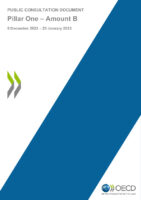
OECD Publishes Consultation Document on Amount B
On 9 December 2022 OECD published a consultation document on Amount B as part of the ongoing work on OECD’s two-pillar solution to address the tax challenges arising from the digitalisation of the economy. Amount B is one of the components of Pillar One and aims to simplify and streamline application of the arm’s length principle in regards to in-country baseline marketing and distribution activities. A particular concern of low capacity jurisdictions has been the relative unavailability of appropriate local market comparables through which arm’s length prices can be established. Amount B will address this issue by providing a basis to establish an arm’s length price in all cases using suitable comparables, wherever they are geographically drawn from. The consultation document outlines the main design elements of Amount B – scope, pricing methodology and the current status of discussions concerning an appropriate implementation framework. Deadline for submission of comments is 25 January 2023.

EU reaches agreement on Pillar 2 – Implementation in Member States no later than 31 December 2023
12 December 2022 the EU Council announced unanimous agreement among member states on the Commission’s proposal for a Directive ensuring a minimum effective tax rate of 15% for large multinationals with a turnover of at least €750 million. With the agreement, the EU will be among the first to implement Pillar II. The Council Directive includes a common set of rules on how to calculate the 15% effective minimum tax rate– so that this is properly and consistently applied across the EU. The rules will apply to multinational enterprise groups and large-scale domestic groups in the EU, with combined financial revenues of more than €750 million a year. They will apply to any large group, both domestic and international, with a parent company or a subsidiary situated in an EU Member State. If the minimum effective rate is not imposed by the country where the subsidiary company is based, there are provisions for the Member State of the parent company to apply a “top-up” tax. This Directive also ensures effective taxation in situations where the parent company is situated outside the EU in a low-tax country which does not apply equivalent rules.

Brazil issues Draft Legislation on implementation of the Arm’s Length Principle
28 December 2022 Brazil published draft legislation on implementation of the arm’s length principle as described in the OECD Transfer Pricing Guidelines. The new provisions came into effect on the date of publication and must be converted into law by the National Congress. The new transfer pricing regime will be optional for taxpayers for 2023 and mandatory as of 2024. Unofficial English Translation
The South African Revenue Service (SARS) issues Arm’s Length Guidance on Intra-Group Loans
17 January 2023 the South African Revenue Service (SARS) released an interpretation note titled “DETERMINATION OF THE TAXABLE INCOME OF CERTAIN PERSONS FROM INTERNATIONAL TRANSACTIONS: INTRA-GROUP LOANS” which provides guidance on how SARS will determine arm’s length pricing for intra-group loans. The Note also provides guidance on the consequences for a taxpayer if the amount of debt, the cost of debt or both are not arm’s length. According to the note an intra-group loan would be incorrectly priced if the amount of debt funding, the cost of the debt or both are excessive compared to what is arm’s length.
Interpretation statement from the Inland Revenue of New Zealand on application of the general anti-avoidance provision
3 February 2023 the Inland Revenue of New Zealand issued an interpretation statement explaining the Commissioner’s view of the law on tax avoidance in New Zealand. It sets out the approach the Commissioner will take to the general anti-avoidance provisions in the Income Tax Act 2007 – ss BG 1 and s GA 1. Where s BG 1 applies, s GA 1 enables the Commissioner to make an adjustment to counteract a tax advantage obtained from or under a tax avoidance arrangement. The Supreme Court in Ben Nevis considered it desirable to settle the approach to the relationship between s BG 1 and the specific provisions in the rest of the Act. This approach is referred to as the Parliamentary contemplation test. The Parliamentary contemplation test was confirmed as the proper and authoritative approach to applying s BG 1 by the Supreme Court in Penny and Frucor. The statement is based on and reflects the view of the Supreme Court as set out in Ben Nevis, and applied in Penny and Frucor.

EU list of Non-Cooperative Tax Jurisdictions – Tax Havens
14 February 2023 the Council of the European Union published an updated list of non-cooperative tax jurisdictions. The British Virgin Islands, Costa Rica, the Marshall Islands and Russia have been added to the list, which now comprises 16 jurisdictions: American Samoa Anguilla Bahamas British Virgin Islands Costa Rica Fiji Guam Marshall Islands Palau Panama Russia Samoa Trinidad and Tobago Turks and Caicos Islands US Virgin Islands Vanuatu This revised EU list of non-cooperative tax jurisdictions includes countries that either have not engaged in a constructive dialogue with the EU on tax governance or have failed to deliver on their commitments to implement the necessary reforms. Those reforms should aim to comply with a set of objective tax good governance criteria, which include tax transparency, fair taxation and implementation of international standards designed to prevent tax base erosion and profit shifting. For the Marshall Islands, there are concerns that this jurisdiction which has a zero or only nominal rate of corporate income tax is attracting profits without real economic activity (criterion 2.2 of the EU list). In particular, the Marshall Islands were found to be lacking in the enforcement of economic substance requirements. The Marshall Islands have been listed already once, in 2018. British Virgin Islands are listed because they were found not to be sufficiently in compliance with the OECD standard on exchange of information on request (criterion 1.2). This is the first time this jurisdiction is listed. For the first time since the list was established, Costa Rica is included because it has not fulfilled its commitment to abolish or amend the harmful aspects of its foreign source income exemption regime (criterion 2.1). Russia is listed after the code of conduct group screened Russia’s new legislation adopted in 2022 against the good tax governance criteria of the code and found that Russia had not fulfilled its commitment to address the harmful aspects of a special regime for international holding companies (criterion 2.1). In addition, dialogue with Russia on matters related to taxation came to a standstill following the Russian aggression against Ukraine.
IRS publishes new interim Guidance on Review and Acceptance of APA Submissions
In a memorandum issued April 25, 2023, the IRS provides guidance to their employees of the Treaty and Transfer Pricing Operations practice area in the Large Business and International Division with respect to requests from taxpayers for an APA with the IRS. The guidance instructs IRS personnel on how to review and, where appropriate, accept taxpayer APA requests to align the processes for APAs to be consistent with IRS’ strategy and maximize the probability of successful, timely, and comprehensive resolution of transfer pricing issues for both taxpayers and the IRS. Visit IRS’ webpage for more information on the US Advance Pricing and Mutual Agreement Program.

Poland issues Tax clarifications on transfer pricing – No. 5: Resale Price Method
24 March 2023 the Polish Ministry of Finance issued Tax clarifications on transfer pricing No. 5: Resale Price Method The resale price method (RPM) is one of the traditional transaction methods and probably most useful where it is applied to distribution operations.. Application of the RPM for determining the price of a controlled transaction begins with the price at which a product that has been purchased from an associated enterprise is resold to an independent enterprise. This price (the resale price) is then reduced by an appropriate gross margin on this price (the “resale price margin”) representing the amount out of which the reseller would seek to cover its selling and other operating expenses and, in the light of the functions performed (taking into account assets used and risks assumed), make an appropriate profit. What is left after subtracting the gross margin can be regarded, after adjustment for other costs associated with the purchase of the product (e.g. customs duties), as an arm’s length price for the original transfer of property between the associated enterprises. The resale price method is described in: • Chapter II, Part II, Section C, paragraphs 2.27-2.44 of the OECD Guidelines; • Chapter 4.3 of the UN Handbook See the previous Polish clarifications on transfer pricing: No. 1 – Comparability Analyses and Documenation No. 2 – Transfer Pricing Adjustments No. 3 – CUP method No. 4 – TNMM Click here for unofficial English translation
Germany publishes draft legislation to implement the global minimum tax – OECD Pillar II
The German Federal Ministry of Finance issues draft law for the implementation of the EU Directive to ensure a global minimum level of taxation for multinational groups of companies and large domestic groups in the Union The aim of the draft law is to implement key elements of the international agreements on Pillar 2 of the so-called two-pillar solution. The post-taxation provisions contained therein are intended to ensure a global effective minimum taxation, to counteract harmful tax competition and aggressive tax structuring and thus to contribute to the promotion of tax justice and a level playing field. Click here for unofficial English translation
Canada plans to modernize and strengthen the general anti avoidance rule (GAAR)
According to the Canadian Budget 2023 the government will release for consultation draft legislative proposals to amend the general anti avoidance rule (GAAR) which was added to the Canadian Income Tax Act in section 245 back in 1988. If abusive tax avoidance is established, the GAAR applies to deny the tax benefit that was unfairly created. The GAAR has helped to tackle abusive tax avoidance in Canada but it requires modernizing to ensure its continued effectiveness. The following amendments to the GAAR is proposed: introducing a preamble (containing interpretive rules and statements of purpose); changing the avoidance transaction standard (from a “primary purpose” test to a “one of the main purposes” test); introducing an economic substance rule (indicators for lack in economic substance); introducing a penalty (25% of the amount of the tax benefit); and extending the reassessment period in certain circumstances (three-year extension to the normal reassessment period). The revised GAAR is expected to come into force as of 1 January 2024. See the relevant sections of the Canadian Budget 2023 below.
Germany – Update to Transfer Pricing Provisions in the Foreign Tax Act (Außensteuergesetz)
On 27 March 2024, new paragraphs (3d) and (3e) were added to the German Foreign Tax Act (Außensteuergesetz – AStG) regarding intragroup financing. Paragraph (3d) concerns the determination of arm’s length interest rates, group vs. stand-alone rating and whether capital is treated as a loan or equity. Paragraph (3e) concerns the treatment of financing arrangements, i.e. cash pools, hedging, etc.
New German Administrative Principles on Transfer Pricing (BMF-AO-2023)
6 June 2023 Germany published it’s new updated administrative principles on transfer pricing. The new publication includes expanded guidance on transfers of functions (and valuation – see English translation) and financial transactions. With regard to the latter, reference is made to two recent decisions of the Federal Fiscal Court (BFH) on intra-group loans (BFH of 18 May 2021, I R 4/17, and of 13 January 2022, I R 15/21). With the exception of the new content on transfer of functions, the new principles can be applied retroactively by the tax authorities. Click here for an unofficial English translation of the German 2023 Administrative Principles on Transfer Pricing
Brazil publishes new updated 2023 transfer pricing legislation – aligned with OECD guidelines
14 June 2023 Brazil issued it’s new updated transfer pricing legislation, which is now aligned with OECD transfer pricing guidelines. Click here for unofficial English translation
Germany – Updated Administrative Principles on Transfer Pricing 2024
12 December 2024, the German Federal Ministry of Finance published updated administrative principles on transfer pricing 2024 (VWG VP 2024). The updates mainly concern the chapter on financial transactions, where paragraphs 3d and 3e have recently been added to the AStG. Paragraph 3d concerns the determination of arm’s length interest rates, group or stand-alone rating and whether capital should be treated as a loan or equity, and paragraph 3e concerns the treatment of financing arrangements, i.e. cash pools, hedging, etc. New guidance is also provided on the application of OECD Pillar 1 – Amount B. Click here for an unofficial English Translation
Draft Guidance on recent Updates to German TP provisions on Intra-Group Financing
14 August 2024, the Federal Ministry of Finance sent revised administrative principles for transfer prices 2023 dated 6 June 2023 regarding the topic of intra-group financing, which, among other things, takes into account new paragraphs 3d and 3e in the German TP provisions. An opportunity to comment on the draft will be available until 6 September 2024. Paragraphs 3d and 3e were recently added to the German Foreign Tax Act (AStG). Paragraph 3d concerns the determination of arm’s length interest rates, group or stand-alone rating and whether capital should be treated as a loan or equity and paragraph 3e concerns the treatment of financing arrangements, i.e. cash pools, hedging, etc. Click here for an unofficial English Translation

138 countries and jurisdictions agree historic milestone to implement OECD’s global tax deal
12 July 2023 138 members of the OECD/G20 Inclusive Framework on Base Erosion and Profit Shifting (BEPS) – representing over 90% of global GDP – agreed an Outcome Statement recognising the significant progress made and allowing countries and jurisdictions to move forward with historic, major reform of the international tax system. The Two‐Pillar Solution to Address the Tax Challenges Arising from the Digitalisation of the Economy will ensure a fairer distribution of profits and taxing rights among countries and jurisdictions with respect to the world’s largest Multinational Enterprises (MNEs). The Outcome Statement agreed at the 15th Meeting of the Inclusive Framework follows 20 months of intense technical negotiations by delegates to continue the work to implement the Two Pillar Solution. It reflects collaboration and compromise among all jurisdictions – small and large, developing and developed – during negotiations by Inclusive Framework members since October 2021. The Outcome Statement summarises the package of deliverables developed by the Inclusive Framework to address the remaining elements of the Two‐Pillar Solution: A text of a Multilateral Convention (MLC) developed by the Inclusive Framework, which allows jurisdictions to reallocate and exercise a domestic taxing right over a portion of MNE residual profits (Amount A of Pillar One). The Inclusive Framework will publish the text of the MLC once it has been prepared for signature, upon resolution of a small number of specific items, as a few jurisdictions have expressed concerns with some specific items in the MLC; A proposed framework for the simplified and streamlined application of the arm’s length principle to in-country baseline marketing and distribution activities (Amount B of Pillar One); where input from stakeholders is requested on certain aspects prior to finalisation; The Subject-to-Tax Rule (STTR) together with its implementation framework, which will enable developing countries to update bilateral tax treaties to “tax back” income on certain intra-group income where such income is subject to low or nominal taxation in the other jurisdiction; A comprehensive action plan will be prepared by the OECD to support the swift and co-ordinated implementation of the Two-Pillar Solution, coordinating with regional and international organisations. In a significant development since October 2021, 138 countries and jurisdictions have also agreed in the Outcome Statement to refrain from imposing newly enacted digital services taxes or relevant similar measures on any company before 31 December 2024, or the entry into force of the MLC if earlier, provided the signature of the MLC has made sufficient progress by the end of the year. This commitment is made in recognition of the progress made to date and the need to prevent disruption or delay of the ratification of the MLC. “The Two-Pillar Solution will provide stability for the international tax system, making it fairer and work better in an increasingly digitalised and globalised world economy,” OECD Secretary-General Mathias Cormann said. “We have all been working intensively on the technical details and on the implementation arrangements that are necessary to make the Two-Pillar Solution a reality. The agreement reached yesterday proves that despite the challenges and compromises along the way, multilateral dialogue works and can deliver results to tackle shared challenges requiring shared solutions. This work is critical to governments and our economies – ultimately, to be able to raise the necessary revenue to fund the essential public goods and services for their citizens.”
Common Errors made in Country-by-Country reports
On 23 May 2024, the OECD issued guidance on common errors made by multinational enterprise (MNE) groups when preparing their country-by-country (CbC) reports. These reports contain valuable information on the global allocation of income, taxes paid, and the location of economic activity among the tax jurisdictions in which an MNE group operates. This information can be used for a high-level transfer pricing risk assessment, the assessment of other BEPS-related risks, and economic and statistical analysis, if appropriate. However, this information can only be used effectively for these purposes if the data in CbC reports is robust and accurate. Tax administrations have encountered a number of errors in the data contained in CbC reports filed to date, and the new guidance describes the most common of these.
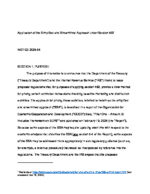
US Notice on application of the Simplified and Streamlined Approach
16 December 2024, the US Treasury Department and the Internal Revenue Service issued a Notice announcing their intention to issue regulations that would provide a new method under the US tranfer pricing rules in Section 482 for pricing certain controlled transactions that involve baseline marketing and distribution activities. The new method, referred to in the US notice 2025-04 as the Simplified and Streamlined Approach (“SSA”), is based on OECD’s Pillar One – Amount B report from February 2024.

Poland issues Tax clarifications on transfer pricing – No. 6: Cost Plus Method
September 29, 2023 the Polish Ministry of Finance has published tax explanations regarding transfer pricing No. 6 regarding the cost-plus method. The purpose of the explanations is to present practical aspects related to the use of the cost plus method. The explanations take into account the recommendations of the Transfer Pricing Forum of September 28, 2021 regarding the description of the cost plus method and comments submitted as part of the tax consultations. The cost-plus method is described in OECD and UN documents: Chapter II, Part II, Section D, paragraphs 2.45-2.61 of the OECD Guidelines; Chapter 4.4 of the UN Handbook See the previous Polish clarifications on transfer pricing: No. 1 – Comparability Analyses and Documenation No. 2 – Transfer Pricing Adjustments No. 3 – CUP method No. 4 – TNMM No. 5 – Resale Price Method Click here for unofficial English translation
FTA Article on Swiss Transfer Pricing Legislation and Practices as of 1 January 2024
The Swiss Federal Tax Authorities have published an Article on the status of transfer pricing legislation in Switzerland as of 1 January 2024. The Article describes the existing legal basis for the application of the arm’s length principle in Switzerland and reference is made to the OECD Transfer Pricing Guidelines as well as to Swiss administrative practice, circulars and case law. The Article highlights the importance of the comparability analysis and focuses on certain aspects of intra-group services, intangibles and financial transactions. With regard to transfer pricing documentation, the Article explains that Switzerland only requires country-by-country reporting. However, it also states that a Swiss taxpayer has a duty to cooperate with the tax authorities, which may involve demonstrating arm’s length pricing of controlled transactions. The official Article is only available in French and German. An unofficial English version of the Article is provided below.
Malta Publishes Local Guidance on Transfer Pricing
On January 19, 2024, the Maltese Commissioner of Taxes and Customs published local guidelines in relation to the transfer pricing rules introduced in Malta in November 2022 by Legal Notice 284 of 2022. The local guidelines refer to the OECD Transfer Pricing Guidelines 2022 in relation to the application of transfer pricing methods, comparability analysis, transfer pricing documentation, etc.
US publishes Memorandum on the Effect of Group Membership on Financial Transactions
On 29 December 2023, the Office of Chief Counsel of the IRS issued a memorandum (AM 2023-008) on the effect of group membership on financial transactions. The memorandum answers the following question: “May the Service consider group membership in determining the arm’s length rate of interest chargeable for intragroup loans and making a section 482 adjustment?” The answer given in the memorandum is “Yes. Under the section 482 regulations, the arm’s length rate of interest on an intragroup loan to a controlled borrower is generally the rate at which that borrower could realistically obtain alternative financing from an unrelated party. Thus, if an unrelated lender would consider group membership in establishing financing terms available to the borrower, and such third-party financing is realistically available, then the Service may adjust the interest rate in a controlled lending transaction to reflect group membership.” The rationale in the memorandum refers to Treas. Reg. §§ 1.482-1, 1.482-2, 1.482-9, OECD TPG 7.13 and 10.76-80 and the realistic alternatives/realistically available options principle.
Brazil publishes comprehensive normative instructions for its new transfer pricing rules
29 September 2023 Brazil published normative instructions (IN RFB nº 2.161/23) for its new transfer pricing rules, which will apply from FY 2024 onwards. Brazil’s transfer pricing legislation is now in line with the OECD Transfer Pricing Guidelines. In fact, the new legislation is the result of a joint project between the Brazilian Federal Revenue Service (Receita Federal do Brasil) and the OECD. The normative instructions deal with the general aspects of the new law, which form the basic part of the new system and apply to all transactions falling within its scope. It addresses practical issues in the application of the new regime and provides simplification measures for some transactions as well as for the fulfilment of ancillary obligations. For companies wishing to apply the new rules for FY 2023, the opt-in deadline has been extended to December. These taxpayers will have to fill in a special form and make their definitive choice between September and December. In December 2022, Provisional Measure 1,152 was issued, significantly modifying Brazilian transfer pricing rules. In June 2023, the Provisional Measure was converted into Law 14.596/23. Click here for unofficial English translation
OECD releases text of the new MLC to Implement Amount A of Pillar One
11 October 2023 the OECD/G20 Inclusive Framework has released the text of a new multilateral convention that updates the international tax framework to co-ordinate a reallocation of taxing rights to market jurisdictions, improve tax certainty, and remove digital service taxes. The Multilateral Convention to Implement Amount A of Pillar One (the MLC) reflects the current consensus achieved among members of the Inclusive Framework. Amount A of Pillar One co-ordinates a reallocation of taxing rights to market jurisdictions with respect to a share of the profits of the largest and most profitable multinational enterprises (MNEs) operating in their markets, regardless of their physical presence. It also ensures the repeal and prevents the proliferation of digital services taxes and relevant similar measures, secures mechanisms to avoid double taxation, and enhances stability and certainty in the international tax system. Accompanied by an Explanatory Statement and the Understanding on the Application of Certainty of Amount A, the MLC provides for a co-ordinated system of taxation and sets out the substantive features necessary for it to be prepared for signature, including its scope and operation. The MLC also includes several provisions designed to address the unique circumstances of developing Inclusive Framework members.
United Arab Emirates issues comprehensive Transfer Pricing Guide
23 October 2023, the United Arab Emirates issued a comprehensive practical Transfer Pricing Guide. The guide is designed to provide general guidance on the Transfer Pricing regime in the UAE with a view to making the provisions of the Transfer Pricing regulations as understandable as possible to readers. UAE’s Transfer Pricing regulations are contained in Federal Decree-Law No. 47 of 2022 on the Taxation of Corporations and Businesses, Chapter 10.
OECD publishes Guidance on Pricing of Minerals
6 November 2023 OECD published a transfer pricing framework on determining the price of minerals. The framework provide guidance for developing countries to accurately delineate the transaction and price mineral sales on an arm’s length basis. Specifically, it identifies the primary economic factors that influence the pricing of minerals using transfer pricing principles. In particular the guidance offers a framework on how to use transfer pricing principles to apply the Comparable Uncontrolled Price method, including identifying the primary economic factors that influence the price of minerals (“mineral pricing framework”) to ensure that developing countries are able to tax mineral exports appropriately. The first section of the practice note sets out a high-level summary of the mining value chain and identifies areas where related-party transactions could pose a risk to tax revenues by taxpayers inappropriately applying the arm’s length principle or not applying it at all. The second section of the practice note specifically addresses transfer pricing risks associated with mineral pricing.
OECD releases the report on Amount B of Pillar One
On 19 February 2024, the OECD/G20 Inclusive Framework on BEPS released the report on Amount B of Pillar One, which provides a simplified and streamlined approach to the application of the arm’s length principle to baseline marketing and distribution activities, with a particular focus on the needs of low-capacity countries. Drawing from existing principles in the OECD Transfer Pricing Guidelines, Amount B provides a simplified and streamlined pricing framework that determines a return on sales for eligible distributors. This framework is expected to reduce transfer pricing disputes, compliance costs, and enhance tax certainty for tax administrations and taxpayers alike. Low-capacity jurisdictions facing limited resources and data availability will especially benefit from the administrative simplification provided by Amount B. The report, which introduces two options for implementation for jurisdictions that opt into the simplified and streamlined approach from January 2025, describes the circumstances under which a distributor is within scope of Amount B including cases where it also performs certain non-distribution activities, such as manufacturing. It also sets out the activities that may exclude a distributor from the scope of the simplified and streamlined approach, such as the distribution of commodities or digital goods. The report is released in line with the July 2023 Outcome Statement on the Two-Pillar Solution to Address the Tax Challenges Arising from the Digitalisation of the Economy, with further work on the interdependence of Amount B and Amount A under Pillar One to be undertaken prior to the signing and entry into force of the Multilateral Convention. The inclusion of the Amount B guidance into the OECD Transfer Pricing Guidelines is accompanied by conforming changes to the Commentary on Article 25 of the OECD Model Tax Convention. The conforming changes signpost specific language relating to tax certainty and the elimination of double taxation included in the report on Amount B and are intended to ensure optionality is preserved in all dispute resolution mechanisms for non-adopting jurisdictions. In particular, the amendments to the Commentary on Article 25 direct States and taxpayers to have regard to and follow specific directions within the report on Amount B where relevant to issues being considered under mutual agreement and MAP arbitration procedures. The conforming changes were prepared by Working Party 1, approved by the Inclusive Framework and will be submitted shortly for approval to the OECD Council prior to publication.

OECD Publishes Manual on Bilateral Advance Pricing Arrangement
On 28 September 2022 OECD published a new manual for entering bilateral advance pricing arrangement (APA’s) which has been approved by the Inclusive Framework on BEPS, as well as all members of the FTA, on 6 July 2022. The Bilateral Advance Pricing Arrangement Manual (“BAPAM” or “Manual”) is intended as a guide to tax administrations and taxpayers for streamlining the bilateral APA process. In addition to detailing several Best Practices for engaging in bilateral APAs, it also includes practical resources for tax administrations and taxpayers, such as templates and examples. It provides tax administrations and taxpayers with basic information on the operation of bilateral APAs (“BAPAs”) and identifies best practices for BAPAs without imposing a set of binding rules upon jurisdictions. The best practices identified in the Manual aim to streamline the BAPA process through: Mitigating delays created by differences in the BAPA processes in each jurisdiction, where possible. Avoiding information asymmetries between competent authorities by ensuring they have access to the same information, in the same form and at the same time. Increasing transparency between competent authorities and taxpayers throughout the BAPA process. Ensuring that there are realistic expectations for competent authorities and taxpayers at each stage of the BAPA process as to the resources required and the expected timeframes to come to an agreement. The Manual does not modify, restrict or expand any rights or obligations contained in the provision of any tax convention, the OECD MTC, or the OECD TPG. To the extent any content in the Manual appear to conflict with a tax treaty, the OECD Model Tax Convention, its Commentary, the OECD Transfer Pricing Guidelines or the Action 14 Final Report, the latter document or guidance is controlling. “Best practice” is the term used in this Manual to describe what is generally thought to be the most appropriate manner to deal with a BAPA process or procedural issue. The best practices contained in the Manual are based on those best practices already undertaken by jurisdictions or put forward by taxpayers and jurisdictions as part of a consultation process rather than being developed from a unified single BAPA programme. Although taxpayers and tax administrations should ideally strive towards implementing these best practices, it is recognised that it may not always be possible to apply a best practice as described in the Manual or there may be situations where their application may not be appropriate.
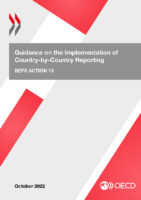
OECD Publishes Updated Guidance on CbC Reporting
On 14 October 2022 OECD published updated guidance on CbC reporting. The guidance contains definitions of items in the CbC reporting template – revenue, related parties, tax accrued and paid, fair value accounting, positive and negative figures etc. Issued related to particular reporting entities is also addressed (investment funds, major shareholding, deemed listing provisions and permanent establishment information. Guidance is provided on common issues such as currency fluctuations, definition of consolidated revenue, long and short accounting periods, mergers – demergers and acquisitions, and errors made by MNE groups in preparing CbC reports. And finally the updated guidance addresses issues related to the mechanism for sharing CbCR between tax authorities.
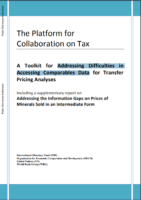
Accessing Comparables Data – A Toolkit on Comparability and Mineral pricing
The Platform for Collaboration on Tax (IMF, OECD, UN and the WBG) has published a toolkit for addressing difficulties in accessing comparables Data for Transfer Pricing Analyses. The Toolkit Includes a supplementary report on addressing the information gaps on prices of Minerals Sold in an intermediate form.
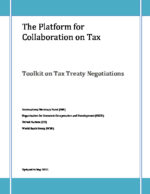
A Toolkit on Tax Treaty Negotiations
The Platform for Collaboration on Tax (IMF, OECD, UN and the WBG) has published a toolkit on Tax Treaty Negotiations. The Toolkit represents a joint effort to provide capacity-building support to developing countries on tax treaty negotiation, building on previous contributions and reducing duplication and inconsistencies. It provides tax officials who have little or no experience in tax treaty negotiation with the tools they need to implement some of the guidance in the UN Manual. It does so by building on Section II of the UN Manual, which sets out how to conduct a tax treaty negotiation in all its phases (preparation, conduct and follow-up), complementing it with a set of tools and resources.
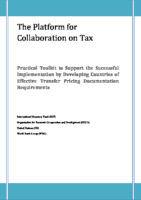
A Toolkit on Implementation of Effective Transfer Pricing Documentation Requirements
The Platform for Collaboration on Tax (IMF, OECD, UN and the WBG) has published a toolkit on implementation of effective transfer pricing documentation requirements.

EU REPORT ON THE USE OF COMPARABLES IN THE EU (2016)
EU REPORT ON THE USE OF COMPARABLES IN THE EU Background The EU Joint Transfer Pricing Forum (JTPF), as part of its work programme for 2015- 2019 (“Tools for the rules”), addresses the use of comparables in the EU (section 2.2 doc. JTPF/005/2015). Non-Governmental Members and Member States were asked to provide contributions as part of the preparation of the two meetings of 18 February 2016 and 23 June 2016. Those led to issuing two working documents (respectively, (doc. JTPF/009/2016/EN and JTPF/013/2016/EN) and were considered in the preparation of an overview on the current state of play, issues and possible solutions. A draft discussion paper on “Comparables in the EU” was prepared and discussed at the JTPF meeting in February 2016 (doc. JTPF/001/2016/EN). The present report also reflects the outcome of this discussion. Contents Background………………………………………………………………………………………………………………. 3 Introduction: context and scope……………………………………………………………………………….. 3 Comparable search…………………………………………………………………………………………………… 4 General aspects……………………………………………………………………………………………………. 4 Search strategy proposal………………………………………………………………………………………. 5 Specific aspects dealing with internal comparables……………………………………………………. 6 Selecting internal comparables……………………………………………………………………………… 6 Using internal comparables…………………………………………………………………………………… 7 Specific aspects dealing with external comparables……………………………………………………. 8 Sources of information in the EU……………………………………………………………………………. 8 Selecting external comparables……………………………………………………………………………… 9 Processing and interpreting external comparables……………………………………………….. 11 Specific aspects of comparability adjustments…………………………………………………………… 13 Observation in practice:………………………………………………………………………………………… 13 General aspects to be considered for comparability adjustments…………………………. 13 State of play and way forward on pan-European comparables………………………………….. 14 Assessing the reliability of the comparability analysis………………………………………………… 16 2. Introduction: context and scope 2. The application of the arm’s length principle is generally based on a comparison of the conditions in a controlled transaction with the conditions in transactions between independent parties (‘comparability analysis’). The OECD Transfer Pricing Guidelines (‘TPG’)1 describe two key aspects of the comparability analysis (i) to identify the commercial and financial relations between the associated enterprises, the conditions and economically relevant circumstances attaching to these relations in order that the controlled transaction is accurately delineated; (ii) the search for comparables, described as “compar(ing) the conditions and the economically relevant circumstances of the controlled transaction as accurately delineated with the conditions and the economically relevant circumstances of comparable transactions between independent enterprises“2. These two components are part of the typical process of a comparability analysis3, whereas the delineation is part of step 3 and the comparable search is addressed in steps 4 to 9. 3. Delineating the transaction (see component (i) above) and drawing conclusions from the risk analytical framework4 is the first step and separate from the search for comparables. The delineation has significant consequences on the result of the comparability analysis. The search for comparables therefore needs to be systematically positioned vis-à-vis the delineation of the transaction. It is the delineated transaction, which governs the comparables search and not vice versa. 4. This report focusses on the second component described above, i.e. the search for comparables. It contains various recommendations for both taxpayers and tax administrations and aims at increasing in practice the objectivity and transparency of comparable searches in the EU. The purpose here is to make progress towards best practices and to find pragmatic solutions for companies doing business in the while sections 3 and 4 apply to search for comparable data in general, Sections 5 and 6 are mainly related to the search for data on potential comparable companies (‘comparable company search’). 3. Comparable search 3.1 General aspects 5. A comparable search should be put in context of the following general aspects. The search for comparable data is part of the comparability analysis. As such, it is inter-linked with the delineation of the transaction and directly based on the facts and circumstances of each individual case. Most Member States have set out legislation and practical guidance on how a comparability analysis should be performed5, which broadly reflect the guidance given in Chapter III of the OECD Transfer Pricing Guidelines. This Chapter has not been revised further to the recent Report on BEPS Actions 8-10 Aligning Transfer Pricing Outcomes with Value Creation and is confirmed as setting out the process of “making comparisons between the controlled transactions and the uncontrolled transactions in order to determine an Arm’s length price for the controlled transaction”. There is also more and more case law available on the use of comparables in EU Member States and in third countries6, which is of growing interest. Finding acceptable comparable data is regarded as a challenge in the practical application of transfer pricing. It is recognised that complete elimination of judgments from the selection of comparable data would not be feasible, but also that much can be done to increase objectivity and ensure transparency in the application of subjective judgements7 . A balance has to be found between (i) care, thought, analysis and judgment, on the one hand, and, (ii) ensuring consistency and maximizing objectivity, on the other hand. The first (i) attributes need to be exercised when searching for comparables but the second term (ii) is crucial in the context of the EU to ensure a proper implementation of the TPG and best practice and therefore to prevent tax disputes “Recommendation 1: a) Both taxpayers and tax administrations should apply a principle of transparency when they respectively conduct or control a comparable search. This means that taxpayers should justify and document the steps of the searches vis-à-vis the tax administration, and, symmetrically, that the tax administration should provide the relevant information for these steps to the taxpayer, when preparing or challenging such searches. b) The burden on both taxpayers and administrations as regards comparable searches execution and review should be proportionate. Additionally, the emphasis should be placed on quality, transparency and consistency of the analysis when conducting a comparable search. Consistency here refers to the application of a coherent approach at each step from the start of the search until its last step (e.g. the adjustment phase), but also considering each step in relation with the others and, overall, the comparable search in correlation with the delineation of the transaction. Consistency over time is a good practice: once an approach is taken, it should be consistently applied, unless valid reasons are put
Germany adds new TP-Provisions to the Foreign Tax Act (Außensteuergesetz)
On 27 March 2024, new paragraphs (3d) and (3e) were added to the German Foreign Tax Act (Außensteuergesetz – AStG) regarding intragroup financing. Paragraph (3d) concerns the determination of arm’s length interest rates, group vs. stand-alone rating and whether capital is treated as a loan or equity. Paragraph (3e) concerns the treatment of financing arrangements, i.e. cash pools, hedging, etc.

EU Commission proposes to simplify tax rules – and harmonise transfer pricing rules across the EU
12 September 2023, the European Commission published a new proposal to simplify tax rules and harmonise transfer pricing rules across the EU to reduce compliance costs for cross-border businesses. According to the press release, the proposal, called “Business in Europe: Framework for Income Taxation” (BEFIT), will make life easier for both businesses and tax authorities by introducing a new, single set of rules to determine the tax base of groups of companies. This will reduce compliance costs for large businesses who operate in more than one Member State and make it easier for national tax authorities to determine which taxes are rightly due. The new, simpler rules could reduce tax compliance costs for businesses operating in the EU by up to 65%. BEFIT will mean that: Companies that are members of the same group will calculate their tax base in accordance with a common set of rules. The tax bases of all members of the group will be aggregated into one single tax base. Each member of the BEFIT group will have a percentage of the aggregated tax base calculated on the basis of the average of the taxable results in the previous three fiscal years. Dealing with 27 different national tax systems, each with its specific rules, makes it costly for companies when it comes to tax compliance. This discourages cross-border investment in the EU, putting European businesses at a competitive disadvantage compared to companies elsewhere in the world. In more detail The proposal builds on the OECD/G20 international tax agreement on a global minimum level of taxation, and the Pillar Two Directive adopted at the end of 2022. The new rules will be mandatory for groups operating in the EU with an annual combined revenue of at least €750 million, and where the ultimate parent entity holds at least 75% of the ownership rights or of the rights giving entitlement to profit. The rules will be discretionary for smaller groups, which may choose to opt in as long as they prepare consolidated financial statements. This might be of particular interest to SMEs. Transfer pricing The package also includes a proposal aiming at harmonising transfer pricing rules within the EU and ensuring a common approach to transfer pricing. The proposal will increase tax certainty and mitigate the risk of litigation and double taxation. The Directive will also further reduce the opportunities for companies to use transfer pricing for aggressive tax planning purposes. Next steps Once adopted by the Council, the proposals should come into force on 1 July 2028 (for BEFIT) and as of 1 January 2026 (for the transfer pricing proposal). For more information Questions and Answers on BEFIT and transfer pricing BEFIT legal proposal Transfer Pricing BEFIT Factsheet
OECD Guidance on the Pricing of Minerals
On 12 August 2024, a report on pricing of minerals was released by the OECD. The report (Determining the Price of Minerals) is specifically targeted the transfer pricing-framework for pricing of Lithium, but also contains arm’s length principles for pricing of commodities in general. Abstract “In the mining sector, government revenue depends on mineral products being priced and measured accurately. This can be especially complex for semi-processed minerals such as lithium, which is primarily used for battery production. The schedule presented in this report applies the mineral pricing framework – as documented in the joint OECD/IGF work Determining the Price of Minerals: A Transfer Pricing Framework – to identify the primary economic factors that influence the price of lithium in applying the Comparable Uncontrolled Price method and ensure that developing countries are able to tax lithium exports appropriately.”
OECD releases New Set of Administrative Guidance on GloBE Model Rules
17 June 2024 OECD released a fourth set of Administrative Guidance on the Global AntiBase Erosion Model Rules (Pillar Two), in order to further clarify technical issues under the GloBE Rules. The Administrative Guidance will eventually be incorporated into the Commentary to the GloBE Model Rules. Administrative Guidance on the GloBE rules has also previously been release in July 2023, December 2023, and February 2024.
OECD releases lists of qualifying and covered jurisdictions under Amount B
On 17 June 2024, additional guidance and lists of qualifying and coverred jurisdictions under Amount B was released by the OECD. The additional guidance includes: The definitions of qualifying jurisdictions within the meaning of section 5.2 and 5.3 of the Amount B guidance. These definitions will facilitate adjustments to the return calculated under the simplified and streamlined approach for tested parties located in those qualifying jurisdictions. The respective definitions are now incorporated into the Amount B guidance in the annex to Chapter IV of the OECD Transfer Pricing Guidelines. The definition of covered jurisdictions within scope of the political commitment on Amount B. That political commitment recognises that subject to their domestic legislation and administrative practices, members of the Inclusive Framework commit to respect the outcome determined under the simplified and streamlined approach to in-scope transactions where such an approach is applied by a covered jurisdiction and to take all reasonable steps to relieve potential double taxation that may arise from the application of the simplified and streamlined approach by a covered jurisdiction where there is a bilateral tax treaty in effect between the relevant jurisdictions. The approach developed to produce the list of covered jurisdictions facilitates tax certainty for jurisdictions most interested in implementing Amount B from 1 January 2025. Note that an expression of interest in applying Amount B does not necessarily mean that a jurisdiction will proceed to implement it. Further work on the Pillar One package, including the Amount B framework, is still ongoing as indicated in the Statement by the Co-Chairs of the Inclusive Framework on 30 May 2024.
United Arab Emirates issues comprehensive Transfer Pricing Guide
On 23 October 2023, the United Arab Emirates issued a comprehensive practical Transfer Pricing Guide. The guide is designed to provide general guidance on the Transfer Pricing regime in the UAE with a view to making the provisions of the Transfer Pricing regulations as understandable as possible to readers. UAE’s Transfer Pricing regulations are contained in Federal Decree-Law No. 47 of 2022 on the Taxation of Corporations and Businesses, Chapter 10.
Nepal issues Guidelines on Transfer Pricing
In October 2024, the Department of Inland Revenue in Nepal issued local Guidelines on Transfer Pricing. Section 33 of the Nepalese Income Tax Act, 2058, includes provisions related to transfer pricing and other arrangements between related parties. Under this section, the Inland Revenue Department may, in determining income, adjust or allocate amounts by including or excluding certain transactions to calculate taxable income and tax based on the arm’s length principle. The department also has the authority to recharacterize distributions, allocations, or allocations of income between related parties. The provisions under section 33 apply to the transactions between related parties based on the transfer pricing methods determined by the department. The guidelines applies for the fiscal year 2024/2025 and forward. The content is devided into the following sections 1 Introduction 2 Definitions 3 Transfer Pricing Determination and Arm’s Length Principle 4 Comparability Analysis 5 Arm’s Length Pricing Methods 6 Documentation Related to Transfer Pricing Determination 7 Administration of Transfer Pricing Determination Annex 1 – List of Documents to be Maintained by the Taxpayer Related to Transfer Pricing Determination Annex 2 – Certified Details Submitted by the Auditor in the Income Return Form
Kenya issues Guidance on the Mutual Agreement Procedure
Kenya’s Double Taxation Agreements (DTAs) contain an Article on Mutual Agreement Procedure (MAP), typically Article 25, which allows two Contracting States to interact with each other with the intent of resolving international tax disputes. These disputes arise from situations where a taxpayer is of the view that they have been subjected to taxation contrary to the provisions of the DTA or from inconsistencies in the interpretation and application of the DTA. The Article also allows for consultation on the elimination of double taxation in cases not provided for in the DTA. The purpose of the Guidance is to set out the MAP process through which taxpayers can request assistance from the Kenyan Competent Authority to resolve disputes arising from taxation that they consider not to be in accordance with the provisions of the relevant DTA.

OECD Report, Making Dispute Resolution Mechanisms More Effective, Action 14 – 2015 Report
OECD (2015), Making Dispute Resolution Mechanisms More Effective, Action 14 – 2015 Report, OECD/G20 BEPS Project, After two years of work, the 15 actions have now been completed. All the different outputs, including those delivered in an interim form in 2014, have been consolidated into a comprehensive package. The BEPS package of measures represents the first substantial renovation of the international tax rules in almost a century. Once the new measures become applicable, it is expected that profits will be reported where the economic activities that generate them are carried out and where value is created. BEPS planning strategies that rely on outdated rules or on poorly co-ordinated domestic measures will be rendered ineffective. Implementation therefore becomes key at this stage. The BEPS package is designed to be implemented via changes in domestic law and practices, and via treaty provisions, with negotiations for a multilateral instrument under way and expected to be finalised in 2016. OECD and G20 countries have also agreed to continue to work together to ensure a consistent and co-ordinated implementation of the BEPS recommendations. Globalisation requires that global solutions and a global dialogue be established which go beyond OECD and G20 countries. To further this objective, in 2016 OECD and G20 countries will conceive an inclusive framework for monitoring, with all interested countries participating on an equal footing. A better understanding of how the BEPS recommendations are implemented in practice could reduce misunderstandings and disputes between governments. Greater focus on implementation and tax administration should therefore be mutually beneficial to governments and business. Proposed improvements to data and analysis will help support ongoing evaluation of the quantitative impact of BEPS, as well as evaluating the impact of the countermeasures developed under the BEPS Project.
A Toolkit on Confidentiality and Information Security Management (2020)
The Platform for Collaboration on Tax (IMF, OECD, UN and the WBG) has published a Confidentiality and Information Security Management Toolkit (2020) The aim of this Confidentiality and ISM toolkit (the “toolkit”) is to assist countries that wish to participate in the automatic exchange of information (AEOI) by ensuring that they meet good practice standards in confidentiality and data safeguarding. It provides general guidance on implementing legal and information security management (ISM) frameworks that ensure the confidentiality of taxpayer information, including information exchanged under international agreements (“exchanged information”), in line with the requirements of the Standard for Automatic Exchange of Financial Account Information in Tax Matters or “AEOI Standard”. The implementation of good practice ISM frameworks is also relevant to other types of exchange, such as the exchange of information on request, spontaneous exchange of information, and exchange of Country‑by‑Country Reports pursuant to the Base Erosion and Profit Shifting (BEPS) Action 13 standard.
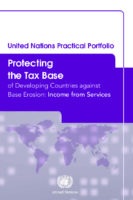
January 2017: United Nations Practical Portfolio – Income from Services
In January 2017, the UN published a practical portfolio with guidance on how to protect a country’s domestic tax base from base erosion and profit shifting through reduced income from services or excessive expences for services.
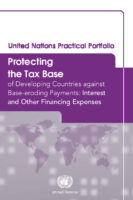
January 2017: United Nations Practical Portfolio – Interest and Other Financing Expenses
In January 2017, the UN published a practical portfolio with guidance on how to protect a country’s domestic tax base from base erosion and profit shifting through payments of interest and other financial expenses.
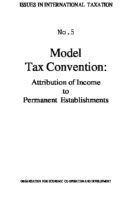
Report on the attribution of income to permanent establishments 1994
The 1994 OECD report on issues related to the attribution of income to permanent establishments, was made available to the public by decision of the OECD Council on 26 November 1993. The report examines the circumstances under which income is to be attributed to a permanent establishment for purposes of an income tax treaty, particularly where goods, services, or intangibles are transferred between the permanent establishment and the home office or another permanent establishment in a third country. Part I sets out general issues related to attributing income to permanent establishments. Part II describes issues raised by the tax treatment of Permanent Establishments. Part III contains conclusions and suggestions

The EU Anti Tax Avoidance Package – Anti Tax Avoidance Directives (ATAD I & II) and Other Measures
Anti Tax Avoidance measures are now beeing implemented across the EU with effect as of 1 January 2019. The EU Anti Tax Avoidance Package (ATAP) was issued by the European Commission in 2016 to counter tax avoidance behavior of MNEs in the EU and to align tax payments with value creation. The package includes the Anti-Tax Avoidance Directive, an amending Directive as regards hybrid mismatches with third countries, and four Other measures. ATAD I The Anti-Tax Avoidance Directive (ATAD), COUNCIL DIRECTIVE (EU) 2016/1164 of 12 July 2016, introduces five anti-abuse measures, against tax avoidance practices that directly affect the functioning of the internal market. 1) Interest Limitation Rule – Reduce profitshifting via exessive interest payments (Article 4) 2) Exit Taxation – Prevent tax motivated movement of valuable business assets (eg. intangibles) across borders (Article 5) 3) General Anti-Avoidance Rule (GAAR) – Discourage Artificial Arrangements (Article 6) 4) Controlled Foreign Company (CFC) – Reduce profits shifting to low tax jurisdictions (Article 7, 8) 5) Hybrid Mismatch Rule – Reduce Hybrid Mismatch Possibilities (Article 9 + ATAD II) The first measure, interest limitation rule aims to prevent profitshifting activities that take place via exessive interest payments . This rule restricts deductibility of interest expenses and similar payments from the tax base. The second measure, exit taxation, deals with cases where the tax base (eg. valuable intangible assets) is moved across borders. The third measure is the general antiavoidance rule (GAAR) which allows countries to tackle artificial tax arrangements not govened by rational economic reasons. The fourth measure is the controlled foreign company (CFC) rule, which is designed to deter profit-shifting to low-tax countries. The fifth measure, the rule on hybrid mismatches, aims to limit cases of double non-taxation and assymetric deductions resulting from discrepancies between different tax systems. ATAD II ATAD II, COUNCIL DIRECTIVE (EU) 2017/952) of 29 May 2017, an amending Directive as regards hybrid mismatches with third countries, contains a set of additional rules to neutralize hybrid mismatches where at least one of the parties is a corporate taxpayer in an EU Member State, thus expanding the application to Non-EU countries. The second directive also addresses hybrid permanent establishment (PE) mismatches, hybrid transfers, imported mismatches, reverse hybrid mismatches and dual resident mismatches. (Article 9, 9a and 9b) Other Measures Other measures included in the Anti Tax Avoidance Package Package are mainly aimed at sharing information and improving knowledge among EU Member States. 1) Country-by-Country Reporting (CbCR) – Improve Transparency (EU Directives on Administrative cooporation in the field of taxation) 2) Recommendation on Tax Treaties – Address Treaty Abuses 3) External Strategy – More Coherent Dealing with Third Countries 4) Study on Aggressive Tax Planning – Improve Knowledge (2015 Report on Structures of Aggressive Tax Planning and Indicators and 2017 Report on Aggressive Tax Planning Indicators) The Country-by-Country Reporting (CbCR) requirement introduces a reporting requirement on global income allocations of MNEs to increase transparency and provide Member States with information to detect and prevent tax avoidance schemes. The Recommendation on Tax Treaties provides Member States with information on how to design their tax treaties in order to minimise aggressive tax-planning in ways that are in line with EU laws. The External Strategy provides a coherent way for EU Member States to work with third countries, for instance by creating a common EU black list of Low Tax Jurisdictions . The Study on Aggressive Tax Planning investigates corporate tax rules in Member States that are or may be used in aggressive tax-planning strategies. Implementation and Effect Most of the measures introduced in ATAD I are now implemented and in effect as of 1 January 2019. ATAD II, addressing hybrid mismatches with Non-EU countries, is also being implemented and will be in effect as of 1 January 2020. A Non official version of the 2016 EU Anti Tax Avoidance Directive with the 2017 Amendments
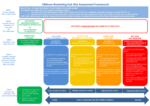
Marketing and Procurement Hubs – Tax Avoidance
The Australian Taxation Office has issued new guidance for multinational groups using offshore marketing- and procurment hubs for tax avoidance purposes. The guidance adresses tax schemes where MNEs uses offshore hubs to shift profits and thereby avoid Australian taxes. Offshore hub arrangements are catagorised by the ATO as white, green, blue, yellow, amber, or red – based on the risk assesment for tax purposes of the transfer pricing setup. The new guidance is a result of recent Australian investigations and hearings into tax avoidance schemes used by Multinational Groups. Tax avoidance in Australia Australian Senate Hearings into Tax Avoidance The overall framework for Australian risk assessment for tax purposes of MNE’s offshore marketing- and procurement hubs is shown below:
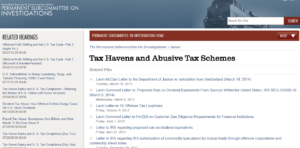
US Senate Hearings on Offshore Profit Shifting and Abusive Tax Schemes
See the documents from the US Senate hearings on offshore profit shifting and abusive tax schemes Offshore Profit Shifting and the U.S. Tax Code – Part 1 (Microsoft & Hewlett-Packard) and Part 2 (Apple Inc.), Carl Levin’s opening statements.
